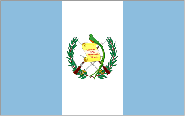Flood
Taxonomy Term List
Integrated Flood Management to Enhance Climate Resilience of the Vaisigano River Catchment in Samoa

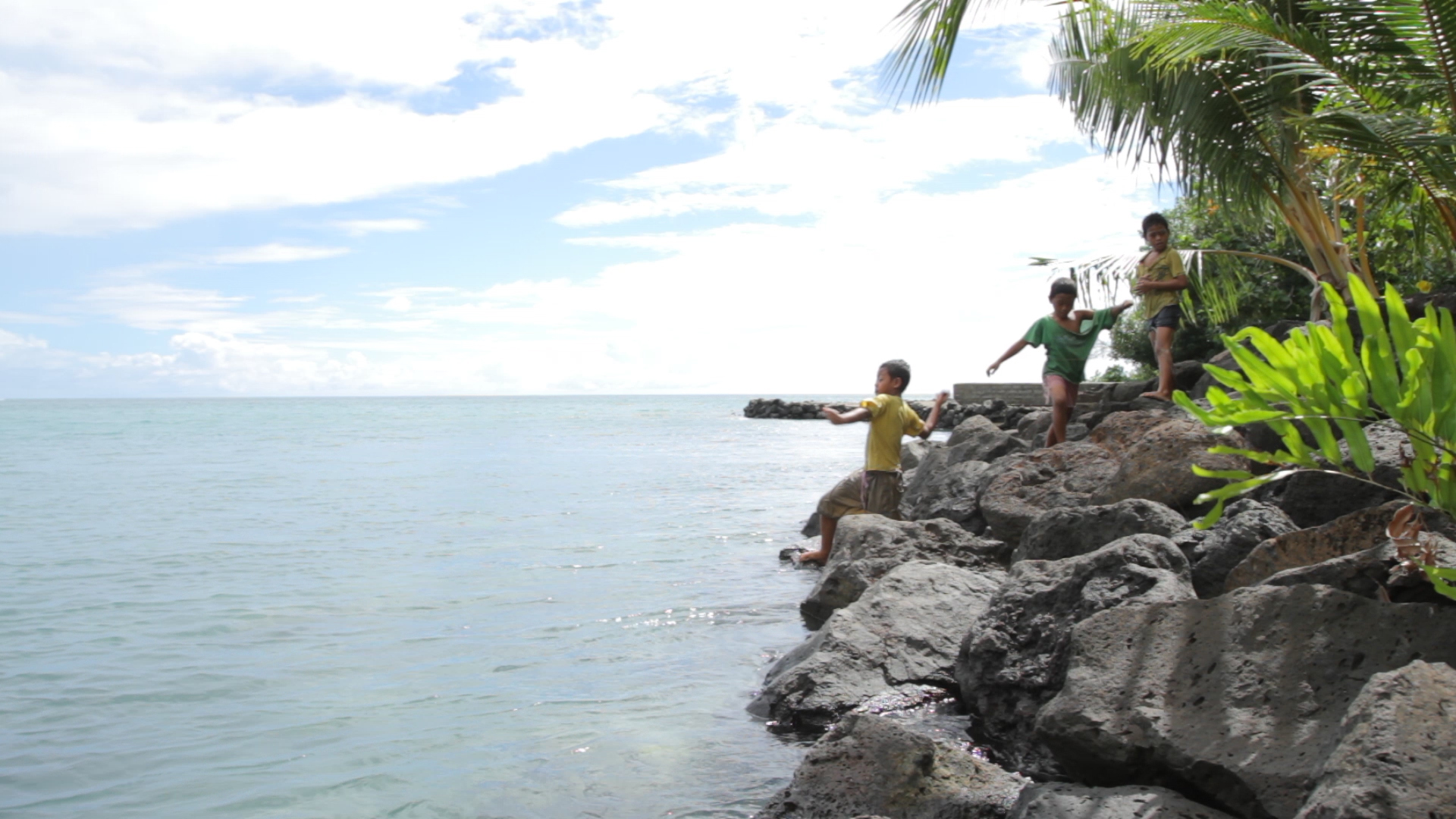

Newsletter
Vaisigano Catchment Project (GCF-VCP) Newsletter | Issue 29, August - September 2022
ProDocs
GCF resources will be used to implement a combination of integrated watershed and flood management works including both hard and soft measures. This includes upgrading river works to cater to increased water flows during flood events (taking into account the likelihood of the increased frequency of extreme events), ensuring that infrastructure works, and home dwellings, government and private-sector buildings are made more secure and provide adequate shelter in case of floods and their aftermaths. Additionally, the project will ensure that when floodwaters occur, the excess waters are channeled away through an effective, efficient, and fit-for-purpose drainage system. The project will consequently play a critical role in assisting the urban population and economy to effectively manage the inevitable increased intensity and frequency of flooding.
Direct benefits from these interventions include reduced risk of damage to public and private infrastructure/assets; reduced possibility of loss of life; and enhanced land value in flood-prone areas. Indirect benefits include reduced losses in income/sales; reduced costs of clean-ups, maintenance and repairs; reduced costs of relief and response efforts; and reduced possibility of health hazards. In addition to these 26,000 direct beneficiaries, the general population of Samoa will benefit from the safeguarding of critical economic assets and learning that will be generated.
In addition, mid and upstream ecosystem and community-based adaptation measures will enhance capture, infiltration, storage and delayed release of rainwater in soils and biomass, and water retention ponds will serve both climate-smart agribusiness development and combat degradation of vulnerable ecosystems through appropriate agro-forestry land-use practices.
Addressing Climate Change in Samoa
Recent extreme events have resulted in approximately US$200 million worth of damages during each event. Climate projections for Samoa suggest that the risk of climate induced events will increase, potentially undermining development progress in urban Apia where the majority of the population and economic activity is located.
Given the topography of the country, extreme events result in significant river discharge that results in flooding of lowland areas. Recent tropical events such as Cyclone Evan have caused significant damage to both public and private assets as a result of flooding, resulting in serious health impacts. Urban infrastructure has suffered considerably from the recurrence of flooding and is unable to cope as climate change-related events are expected to become more frequent and intense.
Projected climate change scenarios cited by the Australian Commonwealth Scientific and Industrial Research Organization (CSIRO) suggest that Samoa is expected to have more frequent and extreme rainfall events; more frequent and longer drought events; increased air and water temperatures; sea level rise; and more frequent extreme wind events.
The project represents the Government of Samoa’s initial steps in operationalizing a comprehensive flood management solution for the likely consequences of extreme events in Apia, the capital with about 80,000 people. In this project, three interlinked project outputs will be pursued:
- Capacities and information base strengthened for the Government of Samoa to pursue an integrated approach to reduce vulnerability towards flood-related risks;
- Key infrastructure in the Vaisigano River Catchment are flood-proofed to increase resilience to negative effects of excessive water; and
- Upgraded drainage in downstream areas to increase capacity and allow for more rapid outflow of flood waters.
'Launching of the Flood Alert Sirens (a first of its kind in Samoa) within the vicinity of the Vaisigano River Catchment Area', Government of Samoa, November 29 2022
'CSSP Market Day for Beneficiaries of the Green Climate Fund-Vaisigano Catchment Project (GCF-VCP) Ecosystem based Enterprise Development Programme (EbAEDP)', Government of Samoa, September 8 2022
'Celebrating the women at the helm of Samoa’s biggest ever climate change and disaster resilient project on International Women’s Day', March 8, 2019.
Monthly Project Newsletter, Issue 1, July 2019.
'Rebuilding the Lelata Bridge to be tougher and higher', Samoa Observer, January 23, 2019.
'GCF Vaisigano River Catchment Site Visit with Assistant Secretary General of the United Nations and Director of UNDP's Regional Bureau for Asia and Pacific, Haoliang Xu', UNDP Samoa Facebook, June 2018.
'Samoa kicks off climate adaptation project to benefit 1 in 3 citizens facing flood risk' UNDP, October 25, 2017. In the lead up to COP climate talks in Bonn, the launch of a Green Climate Fund-financed US$65 million project signals strong global support for climate-resilient development in Small Island Developing States.
'Every dollar counts in fight against climate change - New GCF Funding for Samoa' - Samoa Observer, December 16, 2016. Op-ed celebrating Somoa's recently approved US$58 million Green Climate Fund project.
YouTube
Learn more about the climate challenges facing Samoa, and how UNDP is working to address those challenges and reduce risks.
Samoa GCF-funded project to help address #climate-induced flooding
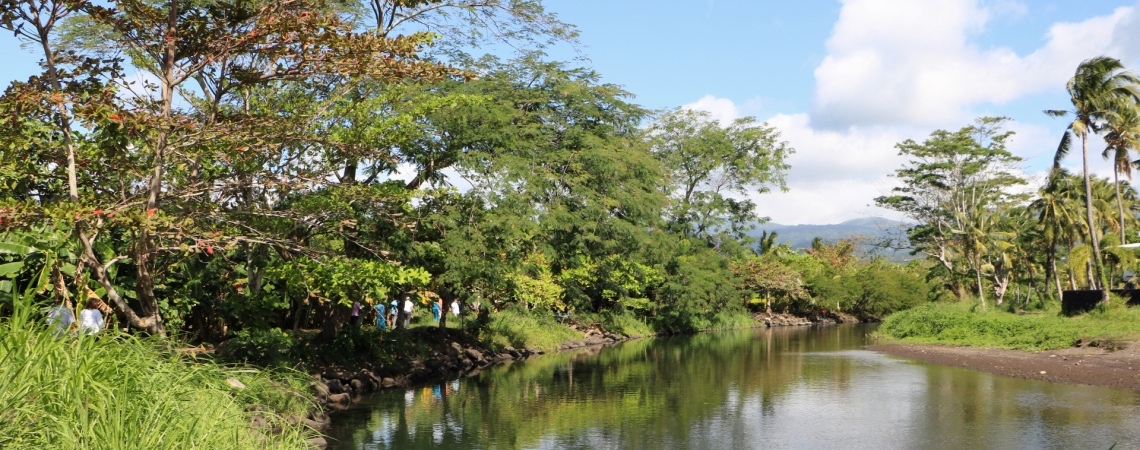
Output 1. Strengthening capacities and mechanisms for integrated approach to reduce flood-related risks in place.
Output 2. Key infrastructure in the Vaisigano River Catchment are flood-proofed to increase resilience to negative effects of excessive water.
Addressing the Risks of Climate Induced Disasters in Bhutan through Enhanced National and Local Capacity for Effective Actions
The current NAPA II project, Addressing the Risk of Climate-Induced Disasters through Enhanced National and Local Capacity in Bhutan, will address urgent and immediate climate change adaptation needs and leverage co-financing resources from national government, bilateral and other multilateral sources, and the private sector. The project is working to “enhance national, local and community capacity to prepare for and respond to climate induced multi-hazards to reduce potential losses of human lives, national economic infrastructure, livelihood and livelihood assets.”
The USD 11.49 million project is funded by Global Environment Facility/Least Developed Countries Fund, and coordinated by the National Environment Commission Secretariat in partnership with UNDP, Bhutan. The project will safeguard essential economic and livelihood infrastructure in hazard-prone communities and key industrial areas from increasing climate hazards such as floods, landslides, windstorms and forest fire through reducing vulnerability at high-risk areas and increasing adaptive capacity of community-level disaster risk management institutions.
Source: UNDP Bhutan Project Identification Form (May 1, 2012), and the Bhutan NAPA II brochure, June 2015.
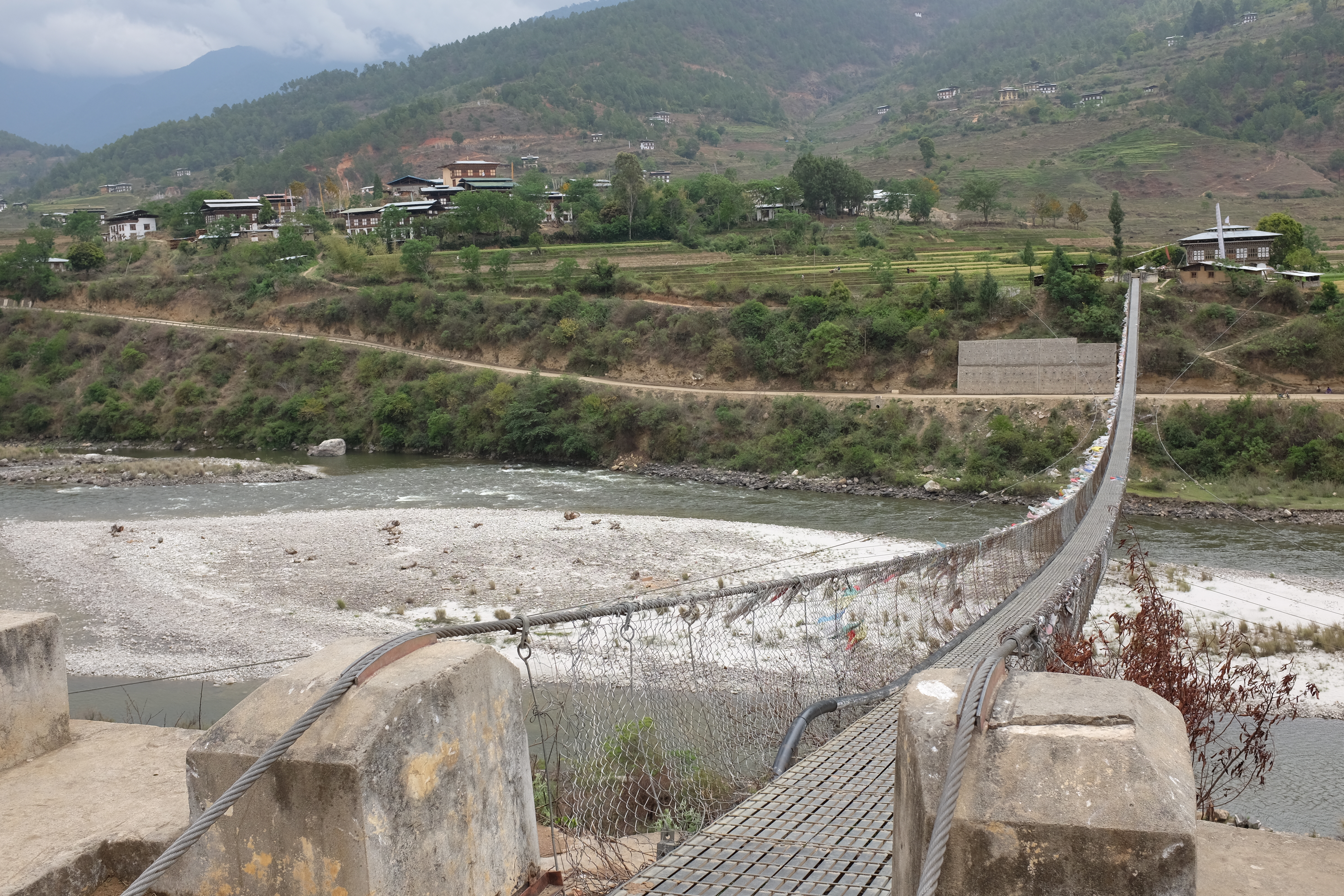
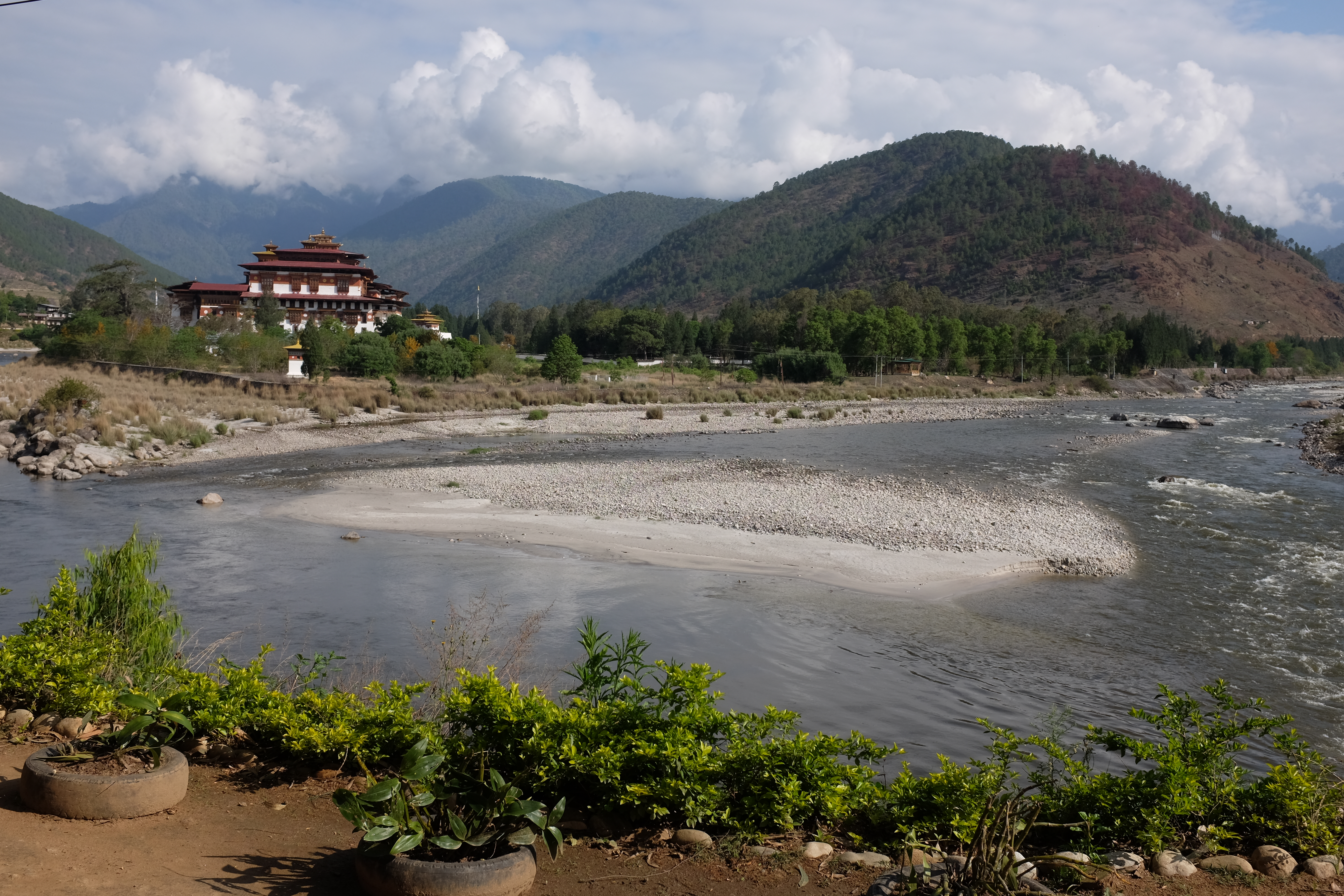
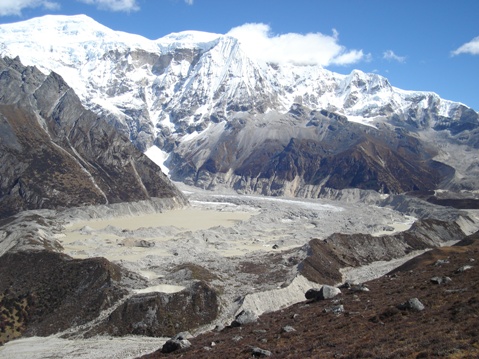
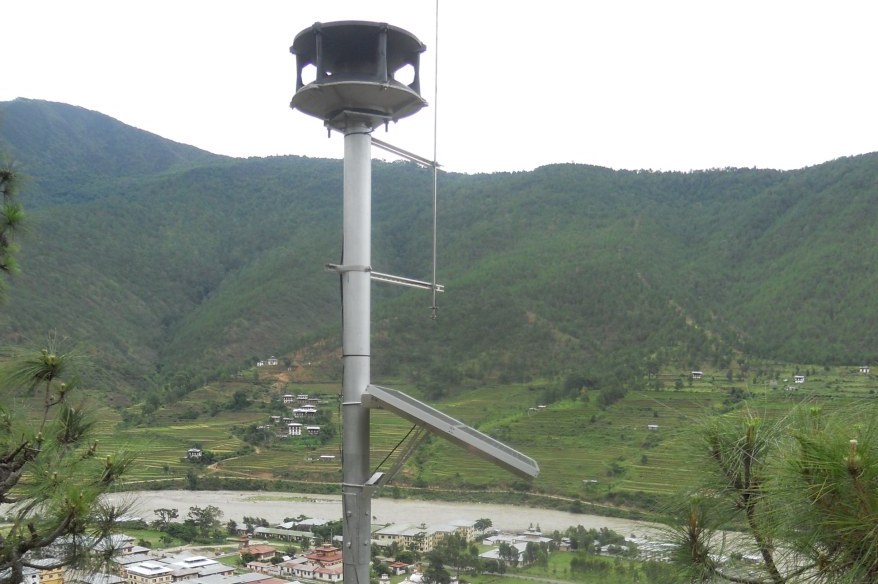
Brochures, Posters, Communications Products
Brochure - ADAPTING TO CLIMATE CHANGE: Implementing Bhutan’s National Adaptation Programme of Action (NAPA) II Project
Assessments and Background Documents
Plans and policies of relevance to NAPs for Least Developed Countries (LDCs)
Bhutan National Adaptation Programme of Action (NAPA) Official Document - May 2006
PIFs
The overarching objective of the project is to increase national, local and community capacity to prepare for and respond to climate-induced multi-hazards to reduce potential losses of human lives, national economic infrastructure, livelihoods and livelihood assets. This objective is fully aligned with the development priorities of the RGoB as set out in Bhutan’s tenth 5-year plan, which is in turn underpinned and guided by the long-term development vision of Gross National Happiness (GNH) and Bhutan 2020: A Vision for Peace, Prosperity and Happiness. Under the four pillars of GNH (i.e. sustainable and equitable socio-economic development; environmental conservation; preservation and promotion of culture; and good governance), the 5-year plan places a strong emphasis, among others, on balanced rural-urban development for poverty alleviation, expansion/maintenance of key economic infrastructure including road infrastructure that connects rural and urban centers, and strengthening of the agricultural sector which continues to employ the majority of Bhutanese and be the backbone of the rural economy.
This project will implement priority interventions addressed in Bhutan's National Adaptation Programme of Actions corresponding to the following objectives, in part or full, as outlined in NAPA profile:
- Disaster management strategy
- Weather forecasting system to serve farmers and agriculture
- Landslide management and flood prevention
- Flood protection of downstream industrial and agricultural area
- Rainwater harvesting
- Promote community-based forest fire management and prevention
Situated on the southern slope of the Eastern Himalayas, Bhutan’s landscape is mountainous and rugged with elevations ranging from 100m in the southern foothills to 7500m towards north. Due to its topography, habitable and arable areas are limited to approximately 8.3% and 2.9%, respectively, of the landmass. Agriculture, which employs 69% of the population and accounts for 78% of monetary income in rural households, and industrial activities are largely practiced in this highly confined space that its topography permits. While Bhutan is in general endowed with abundant water resources from the four major rivers and their tributaries, most of the large rivers are at the bottom of valleys and gorges rendering these rich water resources largely inaccessible for agriculture or domestic use. As a result, irrigation is limited to areas near small perennial streams that exist above main rivers and majority of farmers rely primarily on monsoonal rains, which account for 60-90% of annual precipitation.
Bhutan is one of the most disaster prone countries in the Asia-Pacific region, irrespective of the presence of climate change. The country is exposed to multiple hazards, most prominently flash floods, landslides, windstorms, earthquakes, forest fires, and glacial lake outburst floods (GLOFs). In terms of relative exposure to flood risks (as % of population), Bhutan ranks fourth highest in the region. Although the direct human risks of landslides, windstorms, and forest fires are not particularly higher compared to other countries, the socioeconomic repercussions from these events are thought to be high due to the baseline poverty prevalence.
Climate change is likely to magnify the intensity and frequency of these hazards. In fact, according to the International Disaster Database, among the top 10 natural disasters in Bhutan between 1900 to 2012, in terms of the number of casualties and number affected, all of them occurred in the last two decades (except epidemic outbreaks), which makes certain degree of attribution of climate change to the increasing magnitude of such hazards plausible. The most pronounced consequences of climate change in Bhutan are two folds: disruptions in the monsoonal system and increasing/intensifying trends of extreme hydro-meteorological hazards, both of which are obviously closely linked. These disturbances will amplify the socioeconomic challenges for the Bhutanese society, especially in rural areas where the majority of the population is engaged in rain-fed agriculture and rampant poverty makes them least equipped to adapt to creeping changes in climate.
Monsoon rains generally arrive during the summer months (from late June to late September). Downscaled simulations undertaken in Bhutan’s SNC indicate that the mean annual rainfall will increase by 26-30% by 2069 compared to the baseline year of 1980. This increase occurs primarily during the summer monsoon season while the dry winter season rainfall is projected to decline slightly. In addition, accelerated melting of glaciers, which act as a gigantic natural water retention and dispensing mechanism to communities downstream, is disrupting the hydrological regime of the perennial river systems in the region. All in all, climate change will increase the uncertainty of water availability throughout the year, and rural farmers are likely to have to better manage high fluctuation of rainfalls – increasing volume of monsoonal rain so that they can sustain longer dry periods. This poses significant risks to development when built rural infrastructure to alleviate water shortages, such as communal rainwater harvesting, is minimally available.
Source: UNDP Bhutan Project Identification Form (May 1, 2012)
- Outcome 1: Risks from climate-induced floods and landslides reduced in the economic and industrial hub of Bhutan
- Output 1.1: Protection of Pasakha Industrial area from flooding events through riverbank protection, river training and development of flood buffer zones
- Output 1.2: Slope stabilization to reduce climate-induced landslides in the Phuntsholing Township
- Output 1.3: Integrated risk hazard assessment and mapping completed in 4 critical landslide and flashflood prone areas with data collection standards compatible with the national database
- Outcome 2: Community resilience to climate-induced risks (drought, flood, landslides, windstorms, forest fires) strengthened in at least four Dzongkhags
- Output 2.1: Climate-resilient water harvesting, storage and distribution systems designed, built and rehabilitated in at least four Dzongkhags, based on observed and projected changes in rainfall patterns and intensity
- Output 2.2: Community-level water resource inventory completed and maintained by Dzongkhag administration to increase the adaptive capacity of communities in the face of increasing water scarcity
- Output 2.3: Disaster Management Institutions at various levels established and trained in four Dzongkhags to prepare for, and respond to, more frequent and intense floods, storms and wildfire events
- Outcome 3: Relevant information about climate-related risks and threats shared across community-based organizations and planners in climate-sensitive policy sectors on a timely and reliable basis
- Output 3.1: Enhanced quality, availability and transfer of real-time climate data in all Dzongkhags which experience increasing frequency of extreme hydo-meterological events
- Output 3.2: Increased effectiveness of National Weather and Flood Forecasting and Warning Center through improved capacity to analyze, manage and disseminate climate information in a timely manner
Source: UNDP Bhutan Project Identification Form (May 1, 2012)
Project Start:
- Project Inception Workshop: will be held within the first 2 months of project start with those with assigned roles in the project organization structure, UNDP country office and where appropriate/feasible regional technical policy and programme advisors as well as other stakeholders. The Inception Workshop is crucial to building ownership for the project results and to plan the first year annual work plan.
Daily:
- Day to day monitoring of implementation progress: will be the responsibility of the Project Manager, based on the project's Annual Work Plan and its indicators, with overall guidance from the Project Director. The Project Team will inform the UNDP-CO of any delays or difficulties faced during implementation so that the appropriate support or corrective measures can be adopted in a timely and remedial fashion.
Quarterly:
- Project Progress Reports (PPR): quarterly reports will be assembled based on the information recorded and monitored in the UNDP Enhanced Results Based Management Platform. Risk analysis will be logged and regularly updated in ATLAS.
Annually:
- Annual Project Review/Project Implementation Reports (APR/PIR): This key report is prepared to monitor progress made since project start and in particular for the previous reporting period (30 June to 1 July). The APR/PIR combines both UNDP and GEF reporting requirements.
Periodic Monitoring through Site Visits:
- UNDP CO and the UNDP RCU will conduct visits to project sites based on the agreed schedule in the project's Inception Report/Annual Work Plan to assess first hand project progress. Other members of the Project Board may also join these visits. A Field Visit Report/BTOR will be prepared by the CO and UNDP RCU and will be circulated no less than one month after the visit to the project team and Project Board members.
Mid-Term of Project Cycle:
- Mid-Term Evaluation: will determine progress being made toward the achievement of outcomes and will identify course correction if needed. It will focus on the effectiveness, efficiency and timeliness of project implementation; will highlight issues requiring decisions and actions; and will present initial lessons learned about project design, implementation and management. Findings of this review will be incorporated as recommendations for enhanced implementation during the final half of the project’s term.
End of Project:
- Final Evaluation: will take place three months prior to the final Project Board meeting and will be undertaken in accordance with UNDP and GEF guidance. The final evaluation will focus on the delivery of the project’s results as initially planned (and as corrected after the mid-term evaluation, if any such correction took place). The final evaluation will look at impact and sustainability of results, including the contribution to capacity development and the achievement of global environmental benefits/goals. The Terminal Evaluation should also provide recommendations for follow-up activities.
- Project Terminal Report: This comprehensive report will summarize the results achieved (objectives, outcomes, outputs), lessons learned, problems met and areas where results may not have been achieved. It will also lie out recommendations for any further steps that may need to be taken to ensure sustainability and replicability of the project’s results.
Learning and Knowledge Sharing:
- Results from the project will be disseminated within and beyond the project intervention zone through existing information sharing networks and forums.
- The project will identify and participate, as relevant and appropriate, in scientific, policy-based and/or any other networks, which may be of benefit to project implementation though lessons learned. The project will identify, analyze, and share lessons learned that might be beneficial in the design and implementation of similar future projects.
- Finally, there will be a two-way flow of information between this project and other projects of a similar focus.

Climate proofing local development gains in Machinga and Mangochi Districts of Malawi
Malawi’s high dependency on rainfed, maize dominated agriculture, combined with poor urban planning in rural towns makes 85% of its populations highly vulnerable to climate change induced droughts, floods and post harvest grain losses. Between 1967 and 2003, 18 floods were recorded killing at least 570 people, rendering 132,000 homeless, and affecting a total of 1.8 million people.
This GEF-LDCF funded, UNDP-supported project will help facilitate the use of an integrated package of ecological, physical and policy measures to reduce climate change related risks and improve the effectiveness of the baseline initiatives in Mangochi and Machinga Districts, in the upper Shire Basin.
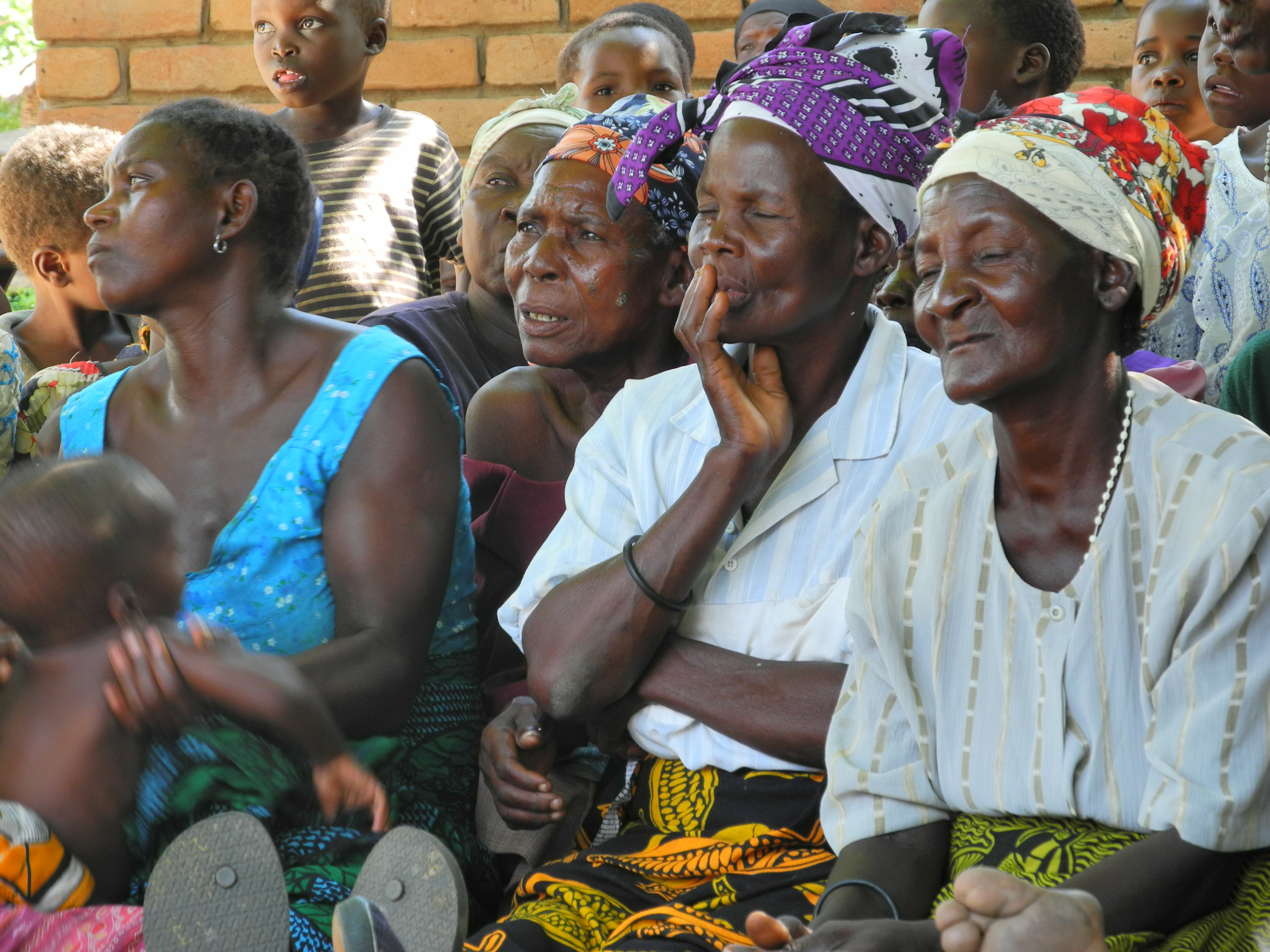
PIFs
Malawi – LDCF Project in Machinga and Mangochi Districts, Project Identification Form (16 April 2012)
(More Information to come)
The project has two main components with the following associated outcomes –
Ecological and physical works demonstrated as climate smart measures for water, soil fertility and post harvest management practices. This component includes the distribution of public and domestic water harvesting and storage facilities (Outcome 1.1); Landscaping and adoption of other measures that complement physical water management infrastructure to reduce risk of climate change induced floods (Outcome 1.2) and; Adoption of climate safe post harvest management technologies and practices (Outcome 1.3)
Upscaling results from the previous component to transform local and national implementation of the baseline programmes, upscaling the resilience of the productivity gains and decentralized development processes. This includes capacity development of district level technical officers to support implementation, maintenance and monitoring of the activities (Outcome 2.1) and; Pilot projects to strengthen policies and policy enforcement for climate consideration in development (Outcome 2.2)
(More Information to come)
(More Information to come)
Malawi: UNDP Impressed With Project Implementation in Mangochi
The United Nations Development Programme (UNDP) says it is impressed with how Mangochi District Council is implementing the Climate Proofing Project which aims at protecting the environment. UNDP Portfolio Manager responsible for Resilience and Sustainable Growth in Malawi, Andrew Spezowka made the remarks Monday when officials from UNDP and government visited the district for mid-term project review. Through the project, the council and communities have established irrigation schemes with solar powered pumps, planted trees along the river banks, build dikes to prevent river flooding and promoted natural regeneration in bare areas. The project has also installed a biogas plant at Mangochi prison. The technology which uses human waste to generate bio-energy will see the institution reducing demand for firewood.
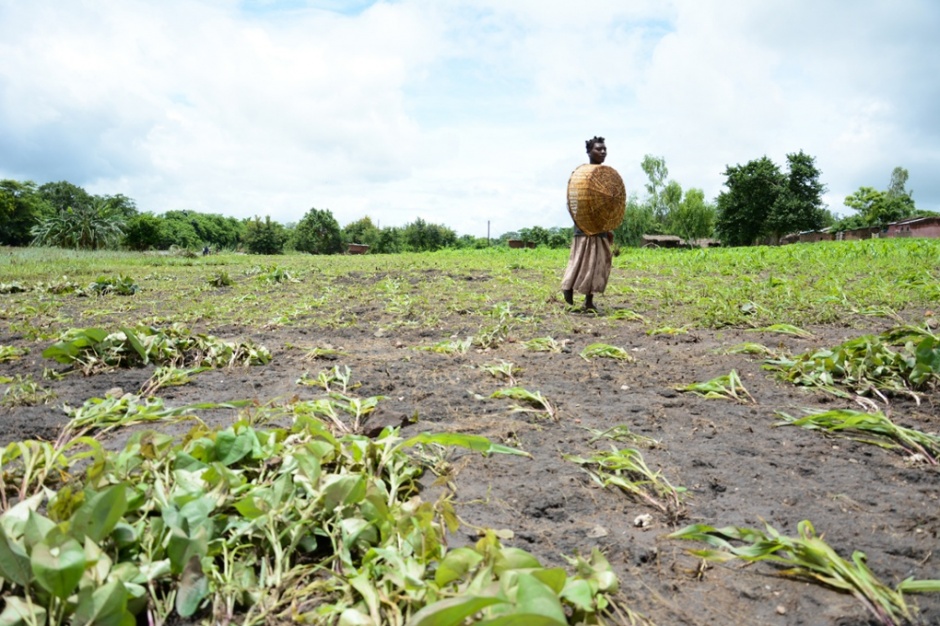
Reducing risk and vulnerability to climate change in Colombia
With one of the highest rates of disaster occurrences in Latin America, Colombia experiences on average 2.97 disasters per year - floods and landslides accounted for a third of these between 1970-1999. The increasing intensity of these events has consequently pushed back advances in social development, leading to increased inequality and poverty. This UNDP-supported project, Reducing risk and vulnerability to climate change in the region of La Depresión Momposina in Colombia focused on the municipalities of Ayapel, San Marcos and San Benito Abad to reduce the vulnerabilities of communities and wetlands to climate-related flooding and drought risks.
PIFs
Led by the Ministry of Environment, this project sought to reduce the vulnerability of communities to the risks of flooding and drought associated with climate change and increase the resilience of ecosystems in this region. Its main activities focused on the municipalities of Ayapel in Córdoba, San Marcos and San Benito Abad, Sucre. This initiative was implemented in association with Local Climate Change Consolidation Platform, made up of community leaders and local institutions.
The project objective was to reduce the vulnerability of communities and of wetlands in the region of La Depresion Momposina to flooding and drought risks associated with climate change and variability. To achieve this objective the project included the following four components:
- The existing hydroclimatological and environmental information system (HEIS) is strengthened and used by local- and regional-level stakeholders, reducing their exposure to the impacts of climate change.
- Wetlands and their hydrology in the target area are rehabilitated as a means of reducing risk to flooding and drought associated with climate change and variability.
- Increased adaptive capacity of local communities in three targeted municipalities through the introduction of agroecological practices that help reduce their vulnerability to the impacts of climate change.
- Institutional and policy capacity strengthened for mainstreaming climate risk management and adaptation measures into planning and decision-making processes.
View Terminal Evaluation report (published in 2017) here on UNDP's Evaluation Resource Centre.
Reducing Risk and Vulnerability to Climate Change in Colombia - 20th December 2018
UNDP Colombia, April 6, 2018: The hanging gardens of Colombia
UNDP Colombia, January 11, 2017: Huertas familiares contra el cambio climático en la Mojana
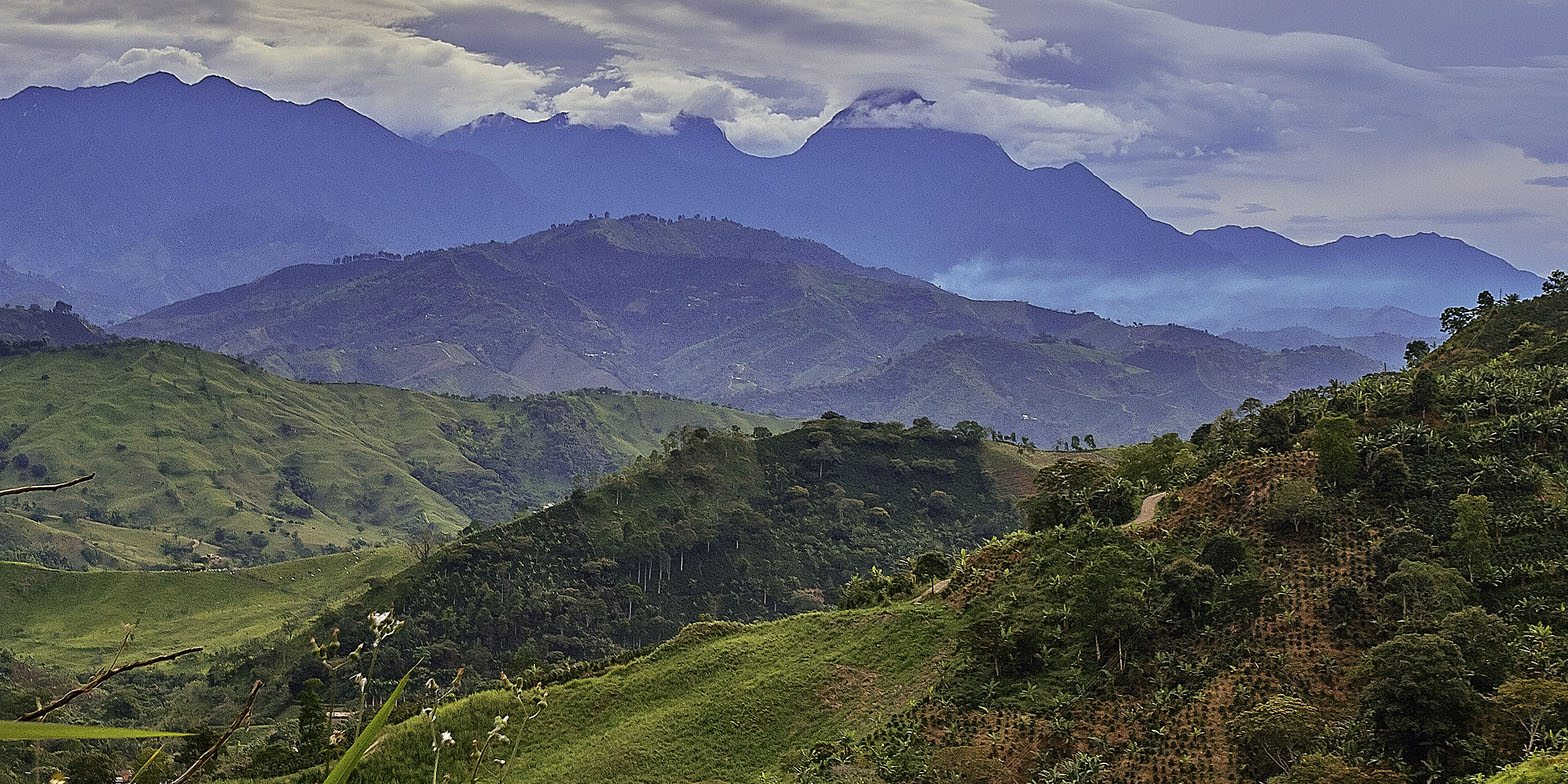
Marshall Islands' Second National Communication
The creation of a National Communication offers countries the opportunity to contribute with technically sound studies and information that can be used for designing mitigation and adaptation measures, and project proposals that can and will help increase their resilience to the impacts of climate change. Activities generally include: V&A assessments, GHG inventory preparation, Mitigation Analysis or Education, and awareness raising activities. The ultimate goal is the integration of climate change considerations into relevant social, economic and environmental policies and actions.

Overall, the most appropriate and effective adaptation measures and strategies are most likely to be those that will be beneficial even in the absence of climate and sea-level change. Such measures and strategies could be considered as “no regrets” adaptation options. Therefore, in the first instance, the capacity of the Marshall Islands to adapt to the effects of climate and sea-level change will largely be determined by its ability to address on-going environmental, social and economic problems. Adaptation includes three main types of activities. First, there are adaptive actions that include activities targeted at specific sectors where climate change effects have been identified. Second, another group of adaptive measures are equally important and include general policies and actions by government to address some of the social driving forces of environmental problems which will heighten vulnerability to climate change effects. Third, it is also important to increase the capabilities of the Marshall Islands to effectively implement adaptations.
The Republic of the Marshall Islands (RMI) are located off the northeast coast of New Zealand, scattered in an archipelago consisting of two roughly parallel island chains. There are twenty nine atolls and five reefs without lagoons which are made up of about 1,225 islands and 870 reef systems. Twenty-two of the atolls and four of the islands are inhabited. The atolls extend about 700 miles (1130km) north to south, and about 800 miles (1290km) east to west. While some of the islands are several kilometers long they rarely exceed a few hundred meters in width and are often considerably narrower. Land elevations are very low, with a mean height above sea level of only two meters (7 feet). The combination of small land areas and low land elevations contributes to the ecological vulnerability in the Republic. There is concern that any change in sea-level could seriously upset the fragile balance between the land and the sea. The RMI consist of fragments of Islands or low Lying Atoll Courtesy of MIVA. Isolated by ocean, the Republic is more than 2,000 miles (3230km) from the nearest trading centers, Honolulu and Tokyo. Geographically, the RMI’s nearest neighbors are Kiribati to the south and the Federated States of Micronesia to the west. The Republic’s Exclusive Economic Zone (EEZ) encompasses over 750,000 square miles (1.2 million sq km) of the Central Pacific. Subsistence agriculture and fishing are the country’s main industry; the tourism industry makes a noteworthy contribution along with development funds from the United States.
- Institutional strengthening, such as by ensuring that governmental departments are adequately structured and equipped with appropriate skills and tools, and are capable of delivering an integrated response to the challenges arising from climate change and accelerated sea level rise.
- Project management and operational training for all stakeholders involved in climate change programs and the implementation of adaptation projects.
- Accurate documentation of baseline conditions from which to measure climate induced changes to the shorelines, reef and island ecosystem and affected settlements and communities.
- Research capacity needs to be strengthened by ensuring adequate support at the professional and technical levels, and by providing financial support for baseline bio-physical and socioeconomic environmental research, monitoring changes to environmental conditions and implementing adaptation measures.
- Appropriate systems are needed for spatial and other data generated through vulnerability assessments, monitoring programs,
integrated coastal zone management planning and the implementation of adaptation projects.
-
Confidence and capacity building programs are needed for government departments, members of local councils and nongovernment organizations.
-
Community awareness and education programs.
-
Proactive participation in international forums and meetings are needed with the aim of continuing to keep the issues confronting small island states, when they are responding to climate change.
- Land Use and Planning: amendment of land use planning policies to include adaptations to climate change.
- Environment and Natural Resources: amendment of environmental and natural policies to include adaptations to climate change.
- Natural Hazard Management: amendment of natural hazard management policies to include adaptations to climate change.
- Administration and Management: initiation of administrative arrangements and management policies to deal with the core sectoral concerns in terms of water resources, coastal resources, agricultural resources, marine resources and human health.
- Human Health: Development of a comprehensive suite of human health policies to address water borne diseases and other sicknesses that are related to climate-induced change.
- Solid and Liquid Waste Management: Provide broad management policies for domestic solid waste and discharges of liquid effluent including consideration of a strategy to convert solid domestic and some industrial wastes to saleable energy.
- Foreign Affairs: Enhancement of foreign policy frameworks.
- Center of Excellence: establish a Centre of Excellence to expand the role of the Marshall Islands in the international as well as national issues of climate change.
- Technology Exchange: technology exchange policies to address applied research and monitoring (information management).
More recently Marshall Islands developed the RMI Climate Change Roadmap 2010 as a national framework for their climate change and sustainable development efforts. With respect to adaptation, actions identified by the Marshall Islands Government included: the implementation of a Micronesia Challenge and Reimaanlok Action Plan; planning and interventions to address vulnerability in food security, public health and other social development areas; and protection and maintenance of key infrastructure and resources through planning and inter-agency coordination (FSF, 2010).
Current Adaptation Action
- Dohan, Rosemary; Hove, Hilary; Echeverría, Daniella; Hammill, Anne, Parry, Jo-Ellen. (2011) “Review of Current and Planned Adaptation Action: The Pacific.” Adaptation Partnership/International Institute for Sustainable Development, pp.82 - 88.
- Central Intelligence Agency [CIA] (2011). The World Factbook: Marshall Islands. Retrieved from https://www.cia.gov/library/publications/the-world-factbook/geos/rm.html
- Environmental Protection Agency [EPA] (2000). Marshall Islands. Initial Communication under the United Nations Framework Convention on Climate Change. Retrieved from http://unfccc.int/essential_background/library/items/3599.php?rec=j&priref=3433#beg
- Fast Start Finance [FSF] (2011). Marshall Islands. Retrieved from http://www.faststartfinance.org/recipient_country/marshall-islands
- Plume, H. (2002). Pacific Islands Climate Change Assistance Programme (PICCAP): New Zealand’s involvement. Presentation made to the UNFCCC CGE Workshop, 8 to 10 August 2002. Retrieved from http://unfccc.int/files/meetings/workshops/other_meetings/application/pdf/new_zealand.pdf
- Sustainable development and the integration of climate change concerns into medium- and long-term planning
- Inventories of anthropogenic emissions by sources and removals by sinks of greenhouse gases
- Measures contributing to addressing climate change
- Research and systematic observation
- Climate change impacts, adaptation measures and response strategies
- Education, training and public awareness
Potential Adaptation Measures:
Agriculture and Food Security
- Switch to different cultivars
- Develop new crops
Water Resources
- Increase water supply, e.g. by using groundwater, building reservoirs, improving or stabilizing watershed management, desalination
- Decrease water demands, e.g. by increasing efficiency, reducing water losses, water recycling, changing irrigation practices
Coastal Zones and Marine Ecosystems
- Develop planning/new investment requirements
- Protect, including building sea walls, and beach nourishment
In 1992, countries joined an international treaty, the United Nations Framework Convention on Climate Change, to cooperatively consider what they could do to limit average global temperature increases and the resulting climate change, and to cope with whatever impacts were, by then, inevitable.
Parties to the Convention must submit national reports on implementation of the Convention to the Conference of the Parties (COP). The required contents of national communications and the timetable for their submission are different for Annex I and non-Annex I Parties. This is in accordance with the principle of "common but differentiated responsibilities" enshrined in the Convention.
The core elements of the national communications for both Annex I and non-Annex I Parties are information on emissions and removals of greenhouse gases (GHGs) and details of the activities a Party has undertaken to implement the Convention. National communications usually contain information on national circumstances, vulnerability assessment, financial resources and transfer of technology, and education, training and public awareness.
Since 1994, governments have invested significant time and resources in the preparation, collection and validation of data on GHG emissions, and the COP has made determined efforts to improve the quality and consistency of the data, which are ensured by established guidelines for reporting. Non-Annex I Parties receive financial and technical assistance in preparing their national communications, facilitated by the UNFCCC secretariat.
Kiribati's Second National Communication - In Progress
The combination of its geographic location and economic situation makes Kiribati one of the most vulnerable countries to climate change. Global temperature increase affects coral growth and sea level. In Kiribati, coastal erosion, sea water from storm surges inundating the land, extensive sea spray, and coral bleaching are being observed, impacts consistent with what to expect from climate change. These changes are adversely affecting the people’s livelihood. Climate change, through its impacts of sea level rise, are leading to coastal erosion, and more frequent and damaging storm surges which are expected to increasingly reduce vital agricultural productivity of crops such as pandanus varieties and coconut.
The creation of a National Communication offers countries the opportunity to contribute with technically sound studies and information that can be used for designing mitigation and adaptation measures, and project proposals that can and will help increase their resilience to the impacts of climate change. Activities generally include: V&A assessments, Greenhouse Gas Inventory preparation, Mitigation Analysis or Education, and awareness raising activities. The ultimate goal is the integration of climate change considerations into relevant social, economic and environmental policies and actions.

Kiribati is situated in the Central Pacific Ocean and consists of 33 atolls with a total land area of about 800 sq km. The atolls have a maximum height of 3 to 4 m above mean sea level and support an estimated population of about 95,000 people. Most people live a subsistence lifestyle, as the country is amongst the poorest and least developed countries in the world - having only a few natural resources, the main industries are tourism and the exports of Copra and fish. The combination of its geographic location and economic situation makes Kiribati one of the most vulnerable countries to climate change.
Global temperature increase affects coral growth and sea level. It is known that the heat content of the oceans has increased, and this could mean increase in internal energy (turbidity enhancement) of the oceans and/or increase in sea level. In Kiribati, coastal erosion, sea water from storm surges inundating the land, extensive sea spray, and coral bleaching are being observed - quite consistent with what to expect from climate change. These changes are adversely affecting the people’s livelihood. Climate change through its impacts of sea level rise leading to coastal erosion, and more frequent and damaging storm surges bounding on the edges of the land will reduce agricultural productivity such as of pandanus varieties, and coconut.
Adaptation Needs and Priorities
- Establishment of a climate change and sea level monitoring center.
- Formation of an integrated coastal zone management plan.
- Public awareness programming.
- Education and training program.
- Research and information dissemination.
- Technology transfers program.
- Water supplies program.
-
Alternative energy source program.
In its National Adaptation Programme of Action (NAPA), Kiribati builds upon these observations to identify nine key areas in which adaptation action is required. These nine key areas (as detailed in Table 3) include implementation in the areas of (MELAD, 2007):
- Freshwater–A water resources adaptation project; and a well improvement project to improve public health;
- Coastal zones–A coastal zone management program for adaptation;
-
Risk reduction and monitoring–A strengthening of climate change information and monitoring program; upgrading of coastal defenses and causeways; and upgrading of meteorological services;
-
Marine resources–Coral monitoring, restoration and stock enhancement; and
-
Agriculture–Agricultural food crops development.
- Dohan, Rosemary; Hove, Hilary; Echeverría, Daniella; Hammill, Anne, Parry, Jo-Ellen. (2011) “Review of Current and Planned Adaptation Action: The Pacific.” Adaptation Partnership/International Institute for Sustainable Development, pp. 71 - 81.
- Central Intelligence Agency [CIA] (2011). Kiribati. The World Factbook. Retrieved fromhttps://www.cia.gov/library/publications/theworld-factbook/geos/kr.html
- Government of Kiribati (2005). Government of Kiribati Climate Change Adaptation Strategy. Retrieved from http://www.environment.gov.ki/CC/KirCCA%20Strategy%202005.pdf
- Kiribati Adaptation Program [KAP] (n.d.). General background. Retrieved from http://www.kap.gov.ki/index.php?option=com_content&view=article&id=5:kiribati-adaptation-project
- Ministry of Environment and Social Development [MESD] (1999). Kiribati Government Initial Communication under the United Nations Convention on Climate Change. Retrieved from http://unfccc.int/essential_background/library/items/3599.php?rec=j&priref=2437#beg
- Ministry of Environment, Land and Agricultural Development [MELAD] (2007). Republic of Kiribati National Adaptation Program of Action. Retrieved from http://unfccc.int/resource/docs/napa/kir01.pdf
- Sustainable development and the integration of climate change concerns into medium- and long-term planning
- Inventories of anthropogenic emissions by sources and removals by sinks of greenhouse gases
- Measures contributing to addressing climate change
- Research and systematic observation
- Climate change impacts, adaptation measures and response strategies
- Education, training and public awareness
Potential Adaptation Measures:
Agriculture and Food Security
- Educational & outreach activities to change management practices to those suited to climate change
- Switch to different cultivars
Water Resources
- Decrease water demands, e.g. by increasing efficiency, reducing water losses, water recycling, changing irrigation practices
- Improve or develop water management
Coastal Zones and Marine Ecosystems
- Develop Integrated Coastal Zone Management
- Protect, including building sea walls, and beach nourishment
- Research/monitor the coastal ecosystem
In 1992, countries joined an international treaty, the United Nations Framework Convention on Climate Change, to cooperatively consider what they could do to limit average global temperature increases and the resulting climate change, and to cope with whatever impacts were, by then, inevitable.
Parties to the Convention must submit national reports on implementation of the Convention to the Conference of the Parties (COP). The required contents of national communications and the timetable for their submission are different for Annex I and non-Annex I Parties. This is in accordance with the principle of "common but differentiated responsibilities" enshrined in the Convention.
The core elements of the national communications for both Annex I and non-Annex I Parties are information on emissions and removals of greenhouse gases (GHGs) and details of the activities a Party has undertaken to implement the Convention. National communications usually contain information on national circumstances, vulnerability assessment, financial resources and transfer of technology, and education, training and public awareness.
Since 1994, governments have invested significant time and resources in the preparation, collection and validation of data on GHG emissions, and the COP has made determined efforts to improve the quality and consistency of the data, which are ensured by established guidelines for reporting. Non-Annex I Parties receive financial and technical assistance in preparing their national communications, facilitated by the UNFCCC secretariat.
India's Second National Communication - May 2012
The creation of a National Communication offers countries the opportunity to contribute with technically sound studies and information that can be used for designing mitigation and adaptation measures, and project proposals that can and will help increase their resilience to the impacts of climate change. Activities generally include: V&A assessments, Greenhouse Gas Inventory preparation, Mitigation Analysis or Education, and awareness raising activities. The ultimate goal is the integration of climate change considerations into relevant social, economic and environmental policies and actions.
India has reasons to be concerned about the impacts of climate change. Its large population depends on climate-sensitive sectors like agriculture and forestry for livelihoods. Any adverse impact on water availability due to recession of glaciers, decrease in rainfall and increased flooding in certain pockets would threaten food security, cause die back of natural ecosystems including species that sustain the livelihoods of rural households, and adversely impact the coastal system due to sea level rise and increased frequency of extreme events. In addition to these impacts, achievement of vital national development goals related to other systems such as habitats, health, energy demand, and infrastructure investments would be adversely affected.
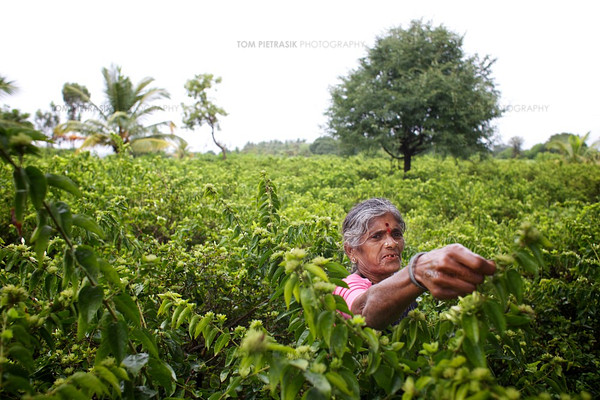

Assessments and Background Documents
India's Second National Communication - Official Document - May 2012
India, situated below the Himalayas and lying in the sub tropical terrain, is adorned with a largely diverse topography, climate and biosphere, spanning a geographic area of 3.28 million km2. Occupying almost 2.3% of the world’s land area, it is the 7th largest country in the world but holds nearly 18% of the world’s population. This puts the nation under great stress to ably maintain a sustainable development pathway and to harness its resources efficiently. India shelters over 1.21 billion people representing various socio-cultural groups that collectively make up the world’s largest democracy.
India has reasons to be concerned about the impacts of climate change. Its large population depends on climate-sensitive sectors like agriculture and forestry for livelihoods. Any adverse impact on water availability due to recession of glaciers, decrease in rainfall and increased flooding in certain pockets would threaten food security, cause die back of natural ecosystems including species that sustain the livelihoods of rural households, and adversely impact the coastal system due to sea level rise and increased frequency of extreme events. In addition to these impacts, achievement of vital national development goals related to other systems such as habitats, health, energy demand, and infrastructure investments would be adversely affected. India’s land surface may be classified as (a) the Great Mountain Wall of the North; (b) the Northern Plains; (c) the Great Southern Peninsular Plateau; (d) the Coastal Plains; and (e) the Islands. India’s unique geography produces a spectrum of climates yielding a wealth of biological and cultural diversity. Land areas in the north have a continental climate with high summer temperatures with cold winters when temperatures may go below freezing.
In contrast are the coastal regions of the country where the temperature is more even throughout the year and rains are more frequent. There is large variation in the amounts of rainfall received in different parts of the country. Average annual rainfall is less than 13 cm in the Thar desert, while at Cherrapunji in the North- East it is as high as 1080 cm. The different climate regimes of the country vary from humid in the North- East (about 180 days rainfall in a year) to arid in Rajasthan (20 days rainfall in a year). A semi-arid belt in the peninsular region extends in the area between the humid west coast and the central and eastern parts of the country. The most important feature of India’s climate is the season of concentrated rain called the “monsoon”. The Southwest (SW) monsoon (May - September) is the most important feature of the Indian climate.
India is a land with many rivers. The twelve major rivers spread over a catchment area of 252.8 million hectares (Mha) cover more than 75 per cent of the total area of the country. Rivers in India are classified as Himalayan, Peninsular, Coastal, and Inlanddrainage basin rivers. The land use pattern is influenced by diverse factors such as population density, urbanization, industry, agriculture, animal husbandry, irrigation demands, and natural calamities like floods and droughts. Despite stresses, the area under forests has increased in recent years due to proactive reforestation and afforestation programmes of the Government of India. Presently 23 per cent of the total land area is under forest and tree cover, while 44 per cent is net sown area. The remaining one-third is roughly equally distributed between fallow land, non-agricultural land, and barren land. The following section is found in the Meister Consultants Group study: *Floating Houses and Mosquito Nets: Emerging Climate Change Adaptation Strategies Around the World.
Strategy and Actors
India was an early adopter of the climate change adaptation and awareness strategies. It has also fostered the debate on global warming in international politics. For instance, during the conference of the signatory states of the United Nations Framework Convention on Climate Change, held in Delhi in 2002, India pushed for a joint declaration on the significance of global warming. The Indian report to the UNFCCC also emphasizes the need to assess vulnerabilities and to plan adaptation measures. In June 2008, India’s prime minister published the National Action Plan on Climate Change (NAPCC), which encompasses both climate protection and adaptation. 191 The plan defines eight priorities as National Missions: solar energy; energy efficiency; sustainable housing; water; preservation of ecosystem in the Himalayas; reforestation; sustainable agriculture; and strategic knowledge management. The responsible ministries are currently working on detailed implementation plans for these eight sectors. Adaptation measures are an important part of this integrated climate strategy. The first two areas (solar energy and energy efficiency) are mainly focused on climate protection, while the others include adaptation components, especially in the cases of agriculture and of knowledge management. What follows is a summary of the adaptation goals. This summary shows that the Indian government has already set strategic adaptation priorities. However, detailed planning and implementation of the measures is only just beginning.
- Decreased snow cover, affecting snow-fed and glacial systems such as the Ganges and Brahmaputra; 70 per cent of the summer flow of the Ganges comes from snowmelt;
- Erratic monsoons with serious effects on rain-fed agriculture, peninsular rivers, water and power supply;
- Decline in wheat production by 4-5 million tonnes with as little as a 1ºC rise in temperature;
- Rising sea levels causing displacement along one of the most densely populated coastlines in the world and threatening freshwater sources and mangrove ecosystems;
- Increased frequency and intensity of floods; increased vulnerability of people in coastal, arid and semi-arid zones of the country; and
- Over 50 per cent of India’s forests are likely to experience a shift in forest types, adversely impacting associated biodiversity and regional climate dynamics, as well as livelihoods based on forest products.
- Islam, Faisal; Hove, Hilary; Parry, Jo-Ellen. (2011) “Review of Current and Planned Adaptation Action: South Asia.” Adaptation Patnership/International Institute for Sustainable Development, pp. 86-107.
- Government of India [GOI] (2008). India’s National Action Plan on Climate Change. Retrieved from http://pmindia.nic.in/Pg01-52.pdf
- Kumar, R. (2008). Climate Change and India: Impacts, policy responses and a framework for EU-India cooperation. European Parliament report no. IP/A/CLIM/NT/2007-10, PE 400.991.
- Mehra, M. (2009). India Starts to Take on Climate Change. State of the World 2009. Washington DC: Worldwatch Institute.
- Ministry of Environment and Forests [MEF] (2004). Initial National Communications to the United Nations Framework Convention on Climate Change. Retrieved from http://unfccc.int/essential_background/library/items/3599.php?rec=j&priref=4870#beg107
- United States Department of State [USDS] (2010). Background Notes: India. Last updated July 14, 2010. Retrieved from http://www.state.gov/r/pa/ei/bgn/3454.htm
- Sustainable development and the integration of climate change concerns into medium- and long-term planning
- Inventories of anthropogenic emissions by sources and removals by sinks of greenhouse gases
- Measures contributing to addressing climate change
- Research and systematic observation
- Climate change impacts, adaptation measures and response strategies
- Education, training and public awareness
Identification of specific research themes related to adaptation and mitigation aspects:
Forests:
Our present state of knowledge on the relationship between climate and plant performance is grossly inadequate for the purpose of modeling future climate change impacts. Research in the following areas is thus a key prerequisite for coming up with robust adaptation strategies.
1. Ecological research on plant and animal species and communities in relation to climate variability and change: Keeping in view the sensitivity of plant and animal species to climate variability and change, the ecological studies of plant and animal species, plant–animal interactions, and community in relation to climate variability and change are required to be carried out.
2. Dynamic vegetation modeling of climate change impacts on forest ecosystems, biodiversity and adaptation: The few studies so far conducted in India are largely based on equilibrium models, which assume that one forest type is replaced by another forest type under changing climate. The varying climate tolerances of different plant species and the transient phase response of plant species subjected to climate change are not analyzed. There is a need to adapt the existing dynamic vegetation models for application to the diverse tropical forest types in order to analyze the implications of climate change at species level. The ultimate goal is to develop adaptation strategies and practices to reduce vulnerability of forests to climate change. The modeling effort should incorporate adaptation.
3. Impact of climate change on mitigation potential, carbon sinks, and adaptation: India has a large afforestation programme, and it is important to understand the likely impacts of climate change to ensure sustainable management of forests and flow of timber, industrial wood, and non-timber products and conservation of biodiversity. There is a need to analyze the climate impacts using dynamic vegetation models and developing adaptation strategies.
4. Mitigation potential assessment: There is also a need to develop a database on biomass growth rates and soil carbon accumulation rates in forests and plantation systems in different agro-ecological zones of India. This data is required for a realistic assessment of the mitigation potential of the forest sector in India.
Agriculture
Agriculture is a key sector in India, as a vast population base of the country still lives in rural areas and depends for its food and livelihoods requirement on agriculture. The agriculture sector is hugely dependent on climate parameters such as rainfall and temperature, and therefore, a significant amount of the country’s resource needs to be expended in identifying appropriate adaptation strategies for the agriculture sector, so as to ensure food security for the nation as well livelihoods security for its vast population. Some adaptation strategies are listed below, which would require considerable research resources in the future.
Conservation Agriculture (Efficient use of resources):
Resource conserving technologies involving zero or minimum tillage with direct seeding, permanent or semi-permanent residue cover, and crop rotations have the potential to improve the efficiency of use of natural resources, including water, air, fossil fuel, and soil. Among other things, the efficiencies gained include less land and time needed to produce the required staple cereals and allowing farmers to diversify crops and cropping patterns or pursue other gainful activities. The technologies can improve the sustainability of the cropping system by conserving the resource base and higher input use efficiency and also mitigating GHG emission.
Change in crop management: Crop management, such as short, medium, and long duration variety; change in sowing time, which includes early as well as late sowing relative to current sowing time; increasing the seed replacement rate by the farmers; and change in irrigation patterns and fertilizer application for increased input use efficiency, should be pursued.
Crop diversification: Diversification of crop and livestock varieties, including the replacement of plant types, cultivars, hybrids, and animal breeds with new varieties intended for higher drought or heat tolerance, has been advocated as having the potential to increase productivity in the face of temperature and moisture stresses. Diversity in seed genetic structure and composition has been recognized as an effective defense against disease and pest outbreak and climate hazards. Moreover, the demand for high value foods such as fruits, vegetables, dairy, meat, eggs, and fish is increasing because of growing income and urbanization. This is reducing the demand for traditional rice and wheat. Diversification from rice–wheat to high value commodities will increase income and result in reduced water and fertilizer use. However, there is a need to quantify the impacts of crop diversification on income, employment, soil health, water use, and GHG emission. The most significant problem to overcome is that diversification is costly in terms of the income opportunities that farmers forego, that is, switching crop varieties can be expensive, and making crop diversification typically less profitable than specialization. Moreover, traditions can often be difficult to overcome and will dictate local practices.
Adjusting cropping season: Adjustment of planting dates to minimize the effect of temperature increase- induced spikelet sterility can be used to reduce yield instability, by avoiding having the flowering period to coincide with the hottest period. Adaptation measures to reduce the negative effects of increased climatic variability as normally experienced in arid and semi-arid tropics may include changing the cropping calendar to take advantage of the wet period and avoiding extreme weather events (for example, typhoons and storms) during the growing season. Cropping systems may have to change to include growing suitable cultivars (to counteract compression of crop development), increasing crop intensities (that is, the number of successive crop produced per unit area per year) or planting different types of crops. Farmers will have to adapt to changing hydrological regimes by changing crops.
Augmenting production and income: Production can be enhanced by improved crop management, improved adverse climate tolerant varieties, improved seed sector, using technology dissemination mechanisms, making available capital and information, which are the key reasons for yield gaps. Watershed management programme can yield multiple benefits. Such strategies could be very useful in future climatic stress conditions. Income can be increased from agricultural enterprises by suitable actions such as accelerated evolution of location- specific fertilizer practices, improved fertilizer supply and distribution system, improved water and fertilizer use.
Early warning system and crop insurance: Improved risk management can be carried out through early warning system and crop insurance policies that encourage crop insurance and can provide protection to the farmers if their farm production is reduced due to natural calamities. In view of these climatic changes and the uncertainties in future agricultural technologies and trade scenarios, it will be very useful to have an early warning system of environmental changes and their spatial and temporal magnitude. Such a system could help in determining the potential food-insecure areas and communities, given the type of risk. Modern tools of information technology could greatly facilitate this.
Water management: In situ soil–water management, particularly in arid and semi-arid regions, where crop growth is severely limited by water deficit even if nutrient availability is adequate, is important for enhancing productivity and organic carbon content of soil. Water harvesting techniques and micro catchments are extremely beneficial in increasing biomass production in arid climates. Waste water and solid waste in agriculture should be recycled as freshwater supplies are limited and water has competing uses, and it would become even more constrained in changed global climate. Industrial and sewage waste water, once properly treated, can also be a source of nutrients for crops. Since water serves multiple uses and users, effective inter-departmental coordination in the government is needed to develop the location- specific framework of sustainable water management and optimum recycling of water.
Post-harvest management: Harvest and post-harvest management should be carried out for minimizing the losses due to extreme climatic events or mean climate change conditions. Providing community-based post- harvest storage spaces at village level can help the farmer to save the produce from exposure to any climate related extreme event. Research efforts are required to design the storage structures and efficient processes for changed climate scenarios.
Harnessing the indigenous technical knowledge of farmers: Farmers in South Asia, often poor and marginal, are experimenting with the climatic variability for centuries. There is a wealth of knowledge for a range of measures that can help in developing technologies to overcome climate vulnerabilities. There is a need to harness this knowledge and fine-tune it to suit the modern needs.
Agriculture has the potential to cost-effectively mitigate GHGs through changes in agricultural technologies and management practices. Mitigation of GHG emission from agriculture can be achieved by sequestering carbon in soil and reducing methane and N2O emissions from soil through change in land use management. Changing crop mixes to include more plants that are perennial or have deep root systems increases the amount of carbon stored in the soil. Cultivation systems that leave residues and reduce tillage, especially deep tillage, encourage the build- up of soil carbon. Shifting land use from annual crops to perennial crops, pasture, and agro-forestry increase both above- and below-ground carbon stocks. Changes in crop genetics and the management of irrigation, fertilizer use, and soils can reduce both N2O and methane emissions. Such options are not only important for global warming mitigation but also for improving soil fertility.
Sequestration of C in agricultural soil: Mitigation of CO2 emission from agriculture can be achieved by increasing carbon sequestration in soil through application of organic manure, change in soil management, and restoration of soil carbon on degraded land. Soil management practices such as reduced tillage, manuring, residue incorporation, improving soil biodiversity, micro-aggregation, and mulching can play an important role in sequestering carbon in soil. Sequestration of carbon in soil is not only important for global warming mitigation but also for improving soil fertility.
Mitigating methane emission from rice fields:
The strategies for mitigating methane emission from rice cultivation could be altering water management, particularly promoting mid-season aeration by short- term drainage; improving organic matter management by promoting aerobic degradation through composting or incorporating it into soil during off-season drained period; use of rice cultivars with few unproductive tillers, high root oxidative activity, and high harvest index; and application of fermented manure like biogas slurry in place of unfermented farmyard manure. Direct-seeding of rice (DSR) could be a potential option for reducing methane emission. Methane is emitted from soil when it is continuously submerged as in case of conventional puddled transplanted rice. However, the DSR crop does not require continuous soil submergence, thereby reducing or totally eliminating methane emission when it is grown as an aerobic crop. As the DSR reduces methane emission drastically it has considerable potential (about 75%) to reduce the global warming potential (GWP) compared to conventional puddled transplanted rice.
Efficient manure management using biogas plant for global warming mitigation: Biogas technology, besides supplying energy and manure, provides an excellent opportunity for mitigating GHG emission and reducing global warming through substituting firewood for cooking, kerosene for lighting and cooking, and chemical fertilizers. The global warming mitigation potential of a family-size biogas plant is about 10 t CO2 eq/year.
Mitigating N2O emission: The most efficient management practices to reduce N2O emission are site-specific nutrient management and use of nitrification inhibitors such as nitrapyrin and dicyandiamide. There are some plant-derived organics such as neem oil, neem cake, and karanja seed extract, which can also act as nitrification inhibitors.
Livestock Sector
The livestock sector is one of the significant contributors to GHG emissions in India. Large uncertainties exist in the livestock enteric methane emission estimates due to variations in livestock breeds, body weights, growth, feed quality and resources and their digestibility, milk production, and emission coefficients.
Livestock species of India are well-adapted breeds, and prospects for these animal species to adapt to increased air temperature through traditional breeding and genetic modifications appear to be promising. More research on possible adaptation of these species to elevated CO2 is needed. The loss in milk yield of these adapted species has been observed to be small due to rise in temperature, suggesting that adapted species will more consistently yield produce under climate change scenarios in tropical latitudes than in temperate latitudes.
Livestock production with scientific management practices will reduce production losses. Livestock management and proper housing under tropical conditions will help in abating extreme productivity losses.The livestock producer awareness of livestock threshold for physiological stress can help in the adaptation of livestock to climate change and reducing losses due to temperature variability and rise due to climate change. Impacts of climate change on livestock after adaptation are estimated to result in small percentage changes in income; these changes tend to be positive for a moderate global warming, especially when the effects of temperature rise are taken into account. The effectiveness of adaptation in ameliorating the economic impacts of climate change on livestock across India will depend on local or on regional resource endowments.
A review of various adaptation strategies needs to be carried out to estimate future requirements of livestock (species and breeds) to assess the impact of climate change. There should be a scientific development of impacts inventory for different livestock species based on quantitative modelling outputs and qualitative assessments. Assessment of the impacts in monetary values for policy decisions making, use of multipurpose adapted livestock species and breeds to minimize impacts, and superior breeds with higher productivity (meat, milk, wool or draught) may be encouraged only for commercial use, and a livestock mix at farm level has to be made available to our farmers. Farmers need to be educated about the consequences of climate change and options. Preventive methods for diseases and vector spread may be taken. Use of suitable animal management practices (some strategies and the related description is given in Table 7.5) to reduce negative impact on yield and production by short-term and long-term strategic planning is to be formulated and executed at grassroot level.
Mitigating methane emissions from livestock production system: Methane production from livestock, either directly through the livestock production system or indirectly through changes in the biodiversity, has significantly contributed to the GHG flux emanating from India. Livestock production can also result in emissions of N2O. However, there are ways through which GHG emissions can be reduced from livestock through various kinds of management and technical strategies, which would at the same time enhance production efficiency and result in lower emissions per unit of milk or meat produced.
There are a number of options that exist to assist in minimizing the effect of heat stress on livestock. The two primary options are making some ration adjustments and altering the environment that the animals live in. Mitigation of methane production from ruminants has both long- term environmental and short-term economic benefits. Manipulations in rumen through different possible options are beneficial to reduce the methane production by decreasing the fermentation of organic matter in the rumen, shifting the site of digestion from the rumen to the intestine, diverting H+ for more propionic acid production, and inhibiting the activity of methanogens.
In addition to the enteric fermentation contribution of methane from ruminants, one of the major GHG emission contributions from livestock production is from forage or feed crop production and related land use. Proper pasture management through rotational grazing is the most cost-effective way to mitigate GHG emissions from feed crop production. Animal grazing on pasture also helps reduce emissions. Introducing grass species and legumes into grazing lands can enhance carbon storage in soils. Improving the management of animal waste products through different mechanisms, such as the use of covered storage facilities, is also important. The level of GHG emissions from manure (methane, N2O, and methane from liquid manure) depends on the temperature and duration of storage. Long-term storage at high temperatures results in higher GHG emissions. In the case of ruminants, pasture grazing is an efficient way to reduce methane emission from manure because storage is not necessary.
Agriculture contributes to about 17.6% of the total GHG emissions of the country (MoEF, 2010). Considering the growing demand for food in the near future and the need for ensuring food and nutritional security of the nation, the Department of Agriculture and Co-operation (DAC) proposes an emphasis on growth in food production rather than on mitigating GHG emissions from the agriculture sector. However, apart from the two broad areas proposed for further research in mitigation of climate change i.e. emission from rice fields and N2O emission due to nutrient management; there is a need to develop research themes that have more focus on mitigating GHG emissions from the livestock sector (According to MoEF, 2010; out of the total GHG emissions from the agriculture sector, a majority share i.e. 63.6% is contributed by livestock).
Vulnerability Assessment and Adaptation
The six critical priorities of the Indian planning process are as follows:
1. Economic security
2. Energy security
3. Environmental security
4. Water security
5. Food security
6. Provision of shelter and health for all
Climate change would impact all of these in varying degrees. Linking of these priority concerns with climate change policies is the key to harmonizing sustainable development and climate change actions. Research has been initiated under the SNC process to assess potential impacts of climate change on some of these concerns, such as Indian agriculture, water resources, forestry, coastal zones, natural ecosystems, human health, industry, and infrastructure, including construction of consistent climate change scenarios for India and assessment of extreme events using existing models and expertise. The work involves assimilation of existing research work, identification of vulnerable sectors and areas, and a few specific case studies for each sector. Lack of data and national databases, resource scarcity, unavailability of sub-regional and sectoral impact assessment scenarios, lack of modelling efforts and trained manpower, and limited national and regional networking of institutes and researchers are some of the constraints highlighted. The key conclusions that emerged from these assessments are as follows:
First, during the current century, under plausible global emissions scenarios, the climate over the Indian sub- continent would be significantly altered, with regional variations in temperature and precipitation as well as in the distribution of the extreme climatic events like hurricanes.
Second, this would be a century of development for India, accompanied by rising incomes, stabilized population (by the later half of the century), integration with global markets, and enhanced social-infrastructure. The effects of this would be increased energy consumption on the one hand and enhanced mitigative and adaptive capacity on the other.
Third, climate change would impact the key sectors of the Indian economy, and in the absence of adaptation strategies, could cause significant damage. The water, agriculture, and forest sectors would experience direct impacts. In these sectors, understanding the regional variability of climate change across different agro-climatic zones would be the key to develop the response strategies. The ecosystems would experience direct stress from the altered climate. The impacts would vary across species and regions. Thus, it is important to identify the vulnerable species, examine their migration capabilities, and develop strategies to enhance resilience and survival.
Fourth, the direct and indirect effects of climate change on health are vital. While the temperature rise and increased precipitation may exacerbate the vector-borne diseases such as malaria and its spread to newer areas, such as higher altitudes in Himalayan mountains; the rising incomes, medical inventions, and increased supply of social infrastructure would cause benign effects that would mitigate the health impacts.
Fifth, the human activities as well as natural processes along the long coastline of India are especially vulnerable to changes in climatic parameters and secondary effects like the rising sea level and increased hurricane activities. Globalization processes are already adding environmental stresses in coastal regions, as trade tends to concentrate economic activities and population in the coastal areas.
Finally, in summation, the impacts and vulnerability would be decided on the one hand by the extent of climate change and on the other by the pace and quality of development in the country. While a successful global climate regime could keep the concentrations of GHGs in the atmosphere within dangerous limits, the quality of development would be the prime insurance at the national level to deal with the adverse impacts of climate change.
The key tasks to address vulnerability and adaptation may be viewed in the matrix of strategies and geographic hierarchy (Table 7.6). Climate change is a long-term issue, that is, the change in climatic parameters and their impacts would continue to exacerbate over decades and centuries.Therefore, the type and intensity of interventions would enhance with the expiry of time. Strategically, we therefore propose only the immediate, that is, near-term tasks to keep adjusting to the advancing knowledge of climate change and its impacts, emerging technologies, and emerging signals from the global policy regime.
In the short-run, that is, within a decade, the immediate tasks are to enhance capacity for scientific assessment, generate awareness among the stakeholders, and institutionalize learning processes. These tasks were effectively initiated within the process for preparing the INC. A network of research institutions exists in India, which houses excellent competences in different areas of assessment (like INCCA). In India, other organized stakeholders like the industry associations and NGOs are already participating in the climate change activities. The institutionalization of the existing research initiatives – first via coordinated networks and later via the creation of centres of excellence – would be a key task. The global assessments, especially by the IPCC, are pertinent inputs into the national assessment. Indian experts are contributing to the IPCC assessments over the past decade. Organizing a cell of experts, especially those participating in the current global assessments, and linking it with the government processes would enhance the Indian assessment, besides improving inputs from the country into the IPCC assessments. The Indian Network for Climate Change Assessment (INCCA) has been constituted to institutionalize the various aspects of climate change related research.
While major investments in adaptation technologies may wait, creating technology knowledge base would be essential to reduce transaction costs and transition time. In case of projects building long-life assets, such as infrastructure, including future climate change in the project impacts assessment would be critical. In the short run, building partnerships is another key task. Awareness among stakeholders is essential for this. In brief, the short- term tasks would focus on soft processes that involve capacity building for assessment, technological learning, partnerships among stakeholders, databases and models to support policy making, vertical-geographical integration of assessment, instituting policy-science interface between government and researchers, and initiating pilot work on economic instruments, such as insurance, for efficient implementation of response strategies.
The medium and long-run tasks would best get crafted with time. Though the specifics of these tasks and timetable of their implementation are uncertain, an a priori speculation of these tasks indicates that instituting measurement systems to assess the extent of impacts in critical sectors would be an important task.The involvement of local actors in developing and implementing adaptation response strategies is critical since the impacts by their very nature are sector- and locale-specific. A vital task would be to institute self-driven and efficient mechanisms under a global umbrella such as the insurance markets, and adequate funds for adaptation technology development and transfer to Non-Annex I countries.
In the final analysis, any new initiatives, institutions, and policies are executed through existing institutions and under prevailing conditions. The apparently perfect strategies designed to address a specific issue, such as climate change, would be implemented via markets, institutions, and organizations that are far from perfect in developing countries. The tasks delineated above, therefore, will have to be moderated and adapted to the realities of the prevailing national dynamics. In India, the present policy dynamics are imbued with reforms perspective. This offers positive opportunities for efficient execution of new initiatives. This notwithstanding, the vulnerability and adaptation strategies to deal with climate change have inherent implementation difficulties on three counts. First, efficient markets to deal with natural climate variability are weak. This is evident from the incomplete and inadequate insurance cover for crop failures and against hurricanes. Second, the insurance market to address the added variability from anthropogenic climate change operates over the distorted baseline of existing insurance market for natural climate variability. The incremental damages due to anthropogenic forcing on climate are difficult to isolate from the baseline climate variability. This makes it difficult to assess incremental damages as well as incremental cost of adaptation. Third, implementation and coordination failures are frequent in developing countries. The damages, therefore, may far exceed those feasible under an efficient system. Vulnerabilities, therefore, appear exaggerated compared to what they would be under an efficient market system or an effective public governance system. The National Action Plan on Climate Change has underscored the use of market mechanisms, wherever and whatever extent possible, in mitigating harmful impacts due to climate change.
The future poses added perception problems for vulnerability assessments. Sector specialists, who are generally scientists or domain experts, carry out most assessments. The scientific assessments make projections of impacts of climate change on specific sectors in a distant future, such as 100 years from now. However, the scientific assessments often fail to grasp the significantly altered social, political, and economic dynamics that would exist after 100 years, especially in developing countries. The scientific assessments thus err in assuming future climate to be operating in the present society. For instance, the impacts assessment
on agriculture miss the fact that farmers of distant future in India would be living in a country with high average annual per capita income and would operate their farming business in an interconnected world with significant global trade in agriculture commodities, having access to superior weather-resistant seeds and efficient cultivation practices. The country would be less likely to have food security as its prime concern, and farmers are unlikely to face starvation. Similarly, the residents of India then would have better access to health and sanitation services and improved medicines. The malaria would be less likely to spread under such conditions, unlike in the present society exposed to the future hot and humid climatic conditions. The key to valid vulnerability assessment would be to assess the future impacts of climatic changes in the context of the then prevailing socio-economic conditions through articulated and structured socio-economic scenarios.
These observations point to a vital nexus between development and climate change. Conventionally, the vulnerability assessments and search for adaptation solutions have been confined to climate change science and policy. The development is then viewed as exogenous to the assessment, at best offering some ancillary benefits. The climate change vulnerability and adaptation assessments conducted for India under the SNC project validate the alternate perspective that considers development as the key contributor of adaptive and mitigative capacities. This perspective shifts the search for adaptation solution away from climate change science and policy to the broader domain of development policies. The real baselines then emerge as the point of departure of the analysis rather than as barriers to achieving efficient solutions in the ideal domain. Development then emerges as the source of solutions for climate change and its impacts, rather than its root cause. The key lesson is that the national development priorities, driven along sustainable pathways, can be the drivers of benign environmental changes. Thus, the integration of well-crafted development and climate actions would not only benefit development, but shall also redress the climate change vulnerabilities in developing countries. The architecture of an effective climate change regime thus rests on the foundation of a robust development regime. If there is to be a reorientation of the energy and other sectors in developing countries to meet the climate change and sustainable development challenges, there is a wide agreement that technology will play a central role in this transformation.
India makes capital goods to the tune of INR 260,000 crores. This sector comprises Heavy Electrical Machinery, Earth Moving Machinery, Industrial Machinery, Engineering Sector and Machine Tools. The sector has a ‘multiplier’ effect on energy consumption. Energy efficient machinery will save MWs of energy during its lifecycle. Indian technologies for the manufacture of these machineries lag behind the international best designs from energy use perspective. The Indian industry needs technology, finance and standards in order to achieve global standards.
In the case of automobiles, emission norms have already been introduced and the study of manufacturing plan of electric mobility in the Department of Heavy Industry is underway. In Heavy Industrial and Electrical Machinery sector, Working Group on Capital Goods & Engineering Sector recommended the manufacture of machinery with new technology with certain percentage of value addition and import of brand new energy efficient machineries as against import of second hand machines by the Indian industry.
Technology Needs for Adaptation and Mitigation
Given that the technology needs of the developing countries in relation to climate challenges are diverse and that deployment often requires a range of activities (not only technical, but many others as well), the term “technology transfer” provides too narrow a perspective and framework for successfully leveraging technologies for meeting climate challenges. The agenda for moving ahead must be viewed with the understanding that the necessary elements must be appropriately tailored both to the specifics of the technology as well as national circumstances. At the same time, the importance of controlling GHGs “through the application of new technologies on terms that make such an application economically and socially beneficial” must also be recognized, as highlighted in the UNFCCC.
Framework for leveraging technology for meeting the climate challenge:
1. Financial assistance: In cases where the high cost is the barrier to the deployment of improved energy technologies that advance climate mitigation as well as the development agenda, industrialized countries will need to fund the incremental costs of these technologies. Such an approach has already been implemented by the Global Environmental Facility (GEF). One possibility may be to develop a policy of graduated financial assistance, where a portion of the incremental costs would be covered by developed countries.
2. Technology deployment in Annex I countries: There is an urgent need to begin deploying improved energy technologies in industrialized countries. In the case of technologies in the pre-commercial or early deployment stage, enhancing deployment in industrialized countries could be the fastest route to cost reduction, as the benefits of “learning-by-doing” accumulate. While large-scale deployment is unlikely to take place in the absence of national climate mitigation policies, targeted policies aimed at key technologies need to be implemented sooner rather than later.
3. Joint technology development: This involves a cooperative technical programme that is driven by technology needs of developing countries rather than the technology agenda of industrialized countries. Such a programme would have elements that cover all aspects of technological development, from basic research to demonstration and early deployment, with the combination of activities for any specific technology being shaped by a nuanced understanding of the innovation gaps for that technology. In the case of mature, well-developed commercial technology such as supercritical power plants, this programme would involve refinement and adaptation of technologies to meet local conditions. In the case of emerging technologies such as fuel cells, the programme would involve some joint applied R&D, significant adaptation to local conditions, and even joint demonstration activities.
4. Knowledge sharing for enhancing deployment:
This is particularly important where non-economic barriers hinder the deployment of technology that otherwise make sense from the economic, climate and/ or Sustainable Development point of view. Sharing of experiences in industrialized or other developing countries and adopting policy approaches to overcome these barriers should be very helpful. At the same time, exploration of new and innovative mechanisms should also yield valuable results. Furthermore, analysis and development of appropriate policies and programmatic approaches, tailored to the needs of specific technologies and national circumstances, would be helpful. It also would be useful to explore alternative ways of enhancing and accelerating innovation such as innovation challenges/prizes, the creation of guaranteed markets, and IP-sharing approaches.
Capacity building in Non-Annex I countries: Since climate challenge is a long-term challenge, a case can be made that building local innovation capacity in developing countries will be critical for helping with adaptation, development of appropriate technologies, and effective deployment. This would not come about just from staffing a few high-tech laboratories, but also from training the next generation of technically competent people.Therefore, it is critical to strengthen local education and research institutions and ensure that they link up to international innovation activities.
Source: India's Second National Communication (May 2012)
In 1992, countries joined an international treaty, the United Nations Framework Convention on Climate Change, to cooperatively consider what they could do to limit average global temperature increases and the resulting climate change, and to cope with whatever impacts were, by then, inevitable.
Parties to the Convention must submit national reports on implementation of the Convention to the Conference of the Parties (COP). The required contents of national communications and the timetable for their submission are different for Annex I and non-Annex I Parties. This is in accordance with the principle of "common but differentiated responsibilities" enshrined in the Convention.
The core elements of the national communications for both Annex I and non-Annex I Parties are information on emissions and removals of greenhouse gases (GHGs) and details of the activities a Party has undertaken to implement the Convention. National communications usually contain information on national circumstances, vulnerability assessment, financial resources and transfer of technology, and education, training and public awareness.
Since 1994, governments have invested significant time and resources in the preparation, collection and validation of data on GHG emissions, and the COP has made determined efforts to improve the quality and consistency of the data, which are ensured by established guidelines for reporting. Non-Annex I Parties receive financial and technical assistance in preparing their national communications, facilitated by the UNFCCC secretariat.
Guyana's Second National Communication
The creation of a National Communication offers countries the opportunity to contribute with technically sound studies and information that can be used for designing mitigation and adaptation measures, and project proposals that can and will help increase their resilience to the impacts of climate change. Activities generally include: V&A assessments, Greenhouse Gas Inventory preparation, Mitigation Analysis or Education, and awareness raising activities. The ultimate goal is the integration of climate change considerations into relevant social, economic and environmental policies and actions.
Protection for the sustainable management of biodiversity is important to achieving the Millennium Development Goals (MDGs). These goals are unlikely to succeed if environmental sustainability and access to energy services for the poor are not fully addressed.
To view progress on Guyana's SNC click here.

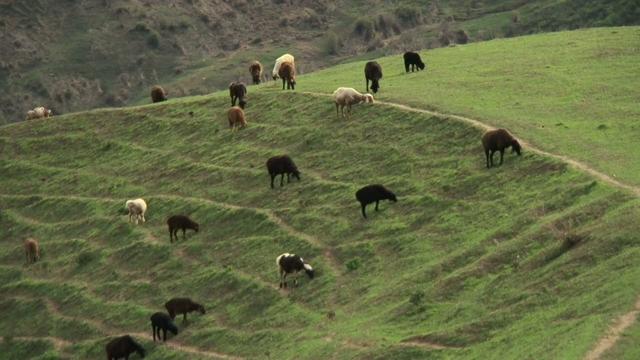
Guyana, based on the 1994 national inventory, makes only a minor contribution to emissions of greenhouse gases. However, increases in the global mean temperatures could have significant impact, especially on the coastal plain and on activities including the dominant agriculture sector in Guyana.
Guyana is a tropical country situated on the northeastern coast of South America. It is bounded on the north by the Atlantic Ocean, on the east by Suriname, on the south by Brazil and on the west by Venezuela. It is an English-speaking country with close ties with the English-speaking Caribbean Islands. It is a member of the Caribbean Community (CARICOM) which has its headquarters in Georgetown, the capital city.
Protection for the sustainable management of biodiversity is important to achieving the Millennium Development Goals (MDGs). And these goals are unlikely to succeed if environmental sustainability and access to energy services for the poor are not fully addressed.
UNDP aims to help the Government of Guyana to strengthen its capacity to address these challenges at national and community levels by seeking out and sharing best practice, providing innovative policy advice and linking partners through pilot projects so that poor people can have access to the help they need to build sustainable livelihoods.
Guyana occupies 214,970 km2 and boasts a rich biodiversity, thanks to its location at the edge of the Amazon basin. It is estimated that forestry covers 78% of the country. Guyana has the following characteristics:
- It is a low-lying state with a vulnerable coastal strip 77 km wide in the east and 26 km wide in the western Essequibo region.
- Ninety percent (90 %) of the population resides in the coastal strip where the main urban centres and commercial activities are to be found.
- There is a wide range of geographic types with coastal, hilly sandy, highland, forested and savannah regions.
- There is no current tectonic activity in Guyana and indications are that the Guyana shield (and the coastal strip, in particular) will not be affected by convergence of the South and North American plates.
- There is a high level of rainfall variability in the country and the seasons and climate are determined mainly by this variability. There are two wet and two dry seasons. First Dry Season (February to April); First Wet Season (April to July) Second Dry Season (July to November); and the Second Wet Season (November to January)
The country can be divided into climatic regions ranging from dry (annual rainfall less than 1788 mm) to extremely wet (annual rainfall greater than 4100 mm).
- Sustainable development and the integration of climate change concerns into medium- and long-term planning
- Inventories of anthropogenic emissions by sources and removals by sinks of greenhouse gases
- Measures contributing to addressing climate change
- Research and systematic observation
- Climate change impacts, adaptation measures and response strategies
- Education, training and public awareness
In 1992, countries joined an international treaty, the United Nations Framework Convention on Climate Change, to cooperatively consider what they could do to limit average global temperature increases and the resulting climate change, and to cope with whatever impacts were, by then, inevitable.
Parties to the Convention must submit national reports on implementation of the Convention to the Conference of the Parties (COP). The required contents of national communications and the timetable for their submission are different for Annex I and non-Annex I Parties. This is in accordance with the principle of "common but differentiated responsibilities" enshrined in the Convention.
The core elements of the national communications for both Annex I and non-Annex I Parties are information on emissions and removals of greenhouse gases (GHGs) and details of the activities a Party has undertaken to implement the Convention. National communications usually contain information on national circumstances, vulnerability assessment, financial resources and transfer of technology, and education, training and public awareness.
Since 1994, governments have invested significant time and resources in the preparation, collection and validation of data on GHG emissions, and the COP has made determined efforts to improve the quality and consistency of the data, which are ensured by established guidelines for reporting. Non-Annex I Parties receive financial and technical assistance in preparing their national communications, facilitated by the UNFCCC secretariat.
Guatemala's Second National Communication
The creation of a National Communication offers countries the opportunity to contribute with technically sound studies and information that can be used for designing mitigation and adaptation measures, and project proposals that can and will help increase their resilience to the impacts of climate change. Activities generally include: V&A assessments, Greenhouse Gas Inventory preparation, Mitigation Analysis or Education, and awareness raising activities. The ultimate goal is the integration of climate change considerations into relevant social, economic and environmental policies and actions.
There is currently a very high level of adaptation activity in Guatemala. To date, the focus of adaptation projects has been on capacity building, primarily in the water and agriculture sectors, as well as with respect to enhancing the capacity of the government to respond to climate change impacts. In addition, investments have been made in a coastal zone management, forestry and disaster risk management. Gaps in programming appear to exist with respect to human health, the built environment and gender. Projects have been supported by a wide range of funders and implementers, from the United Nations Development Programme (UNDP) and the World Bank, to high levels of involvement from the government and local non-governmental organizations (usually as implementers).
To view progress on Guatemala's SNC click here.
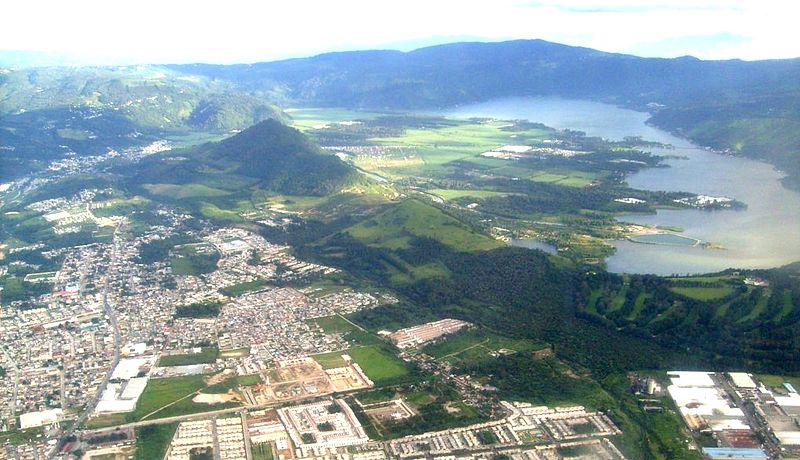

With coastlines on both the Pacific Ocean and the Gulf of Honduras, the mountainous country of Guatemala covers an area of 108,889 square kilometers and has the largest population in Central America (estimated to be 14.36 million people). With political stability having returned to the country since 1996, its economy has grown. Agriculture accounts for 26 per cent of exports (including traditional products such as sugar, bananas and coffee, as well as new products such as winter vegetables, fruit and cut flowers). Other important economic sectors include tourism and the export of textiles and apparel (USDS, 2011). Despite these gains, Gross Domestic Product per capita remains about half of the average for Latin America and the Caribbean (at US$5,200 in 2010; CIA, 2010).
Like most countries in Latin America, Guatemala has submitted one national communication to the United Nations Framework Convention on Climate Change (UNFCCC). Land use change and forestry are by far the largest contributors to GHG emissions in the country. The emission reduction potential of the sector is large, but not sufficiently explored. Guatemala counts with 8 CDM projects, one of which is in the agricultural sector.
The Project on Capacity building for Stage II adaptation to climate change (Costa Rica, Cuba, El Salvador, Guatemala, Honduras, Mexico, Nicaragua, Panama) is funded through the GEF Trust Fund and is implemented by UNDP. Central America, Mexico and Cuba serve as the pilot region for elaborating and applying an Adaptation Policy Framework for preparing adaptation strategies, policies and measures. The application of this framework will demonstrate how policy for adaptation can be integrated into national sustainable development for at least three human systems: water resources, agriculture and human health. This demonstration project builds upon the Stage I vulnerability and adaptation assessments of the Initial National Communications of the eight participating countries of the region and will prepare them to move onto Stage III Adaptation. The outputs of the project, Stage II adaptation strategies may be used for preparing second National Communications.
Adaptation Needs and Priorities
Guatemala’s size and topography mean that there is a wide variation in climate within the country, from hot and dry to cool and humid areas. Current climate hazards include tropical storms and cyclones (with no clearly observed increasing or decreasing trend), droughts (increasing trend) and extreme rainfall events resulting in floods (also no clear trend).
Key climate projections show an increase in mean monthly temperatures of between 0.6° to 3.4°C by 2050, depending on the emission scenario and the season. There is much less clarity about rainfall, with climate models showing both increases and decreases depending on the emissions scenarios. Sea levels are expected to rise, however the extent to which they will do so is uncertain due to other factors, including the movement of tectonic plates (República de Guatemala, 2001).
National adaptation priorities have been identified in a number of key documents. Guatemala’s First National Communication to the United Nations Framework Convention on Climate Change (UNFCCC) focuses its detailed vulnerability assessments on the health, forest, staple foods and water sectors, implying that it is in these sectors where the impacts of climate change will be harshest (República de Guatemala, 2001). Subsequent documents continue to refer to the sectors highlighted in the First National Communication. The more recent “National Climate Change Policy,” developed by the government of President Alvaro Colom and published in 2009, lists as key objectives capacity development, vulnerability reduction and adaptation, along with a reduction in greenhouse gas emissions (Guatemala, 2009). Within the policy, the following areas are considered relevant to adaptation action: health; agriculture, livestock and food security; forest resources; integrated water resources management; ecosystems conservation and management; and infrastructure.
Based on these policy documents, health, water, agriculture, forests/ecosystems and infrastructure can be considered key sectors for adaptation in Guatemala.
Key Vulnerabilities:
- Agriculture/Food Security
- Water Resources
- Public Health
- Land Resources
In terms of priority action, the First National Communication focuses solely on mitigation action and not adaptation priorities (República de Guatemala, 2001). Similarly, the “National Climate Change Policy” does not identify specific adaptation priorities either, but does propose the following guidelines which would strengthen adaptation: promote traditional and ancestral practices for natural resource use and management; take preventive measures; adopt integrated water resources management and prioritize protection of water bodies; and include climate variables in development planning (Guatemala, 2009). Additional studies conducted in two watersheds in the context of a regional adaptation program identified adaptation measures for water and food security. For water, the report proposes action on sanitation, demand management, irrigation, water storage, forest protection and reforestation, flood protection and early warning systems. For food security, recommendations include organizational, commercial, technological, financial, normative and territorial measures to vitalize the food production chain (MARN, 2007a, 2007b). Finally, in a study conducted on two watersheds, the construction of flood barriers, water treatment plants and improvements in irrigation efficiency are proposed as important adaptation measures (Guatemala, 2008).
National Level Policies and Strategic Documents
The “National Climate Change Policy” (Guatemala, 2009) is Guatemala’s core policy document on climate change. It lays out the basis, objectives, entry points, guidelines and legal basis for national climate change adaptation and mitigation. Key objectives include capacity development, vulnerability reduction and adaptation, as well as climate change mitigation. The document specifies key sectors for adaptation action, but does not indicate any specific actions or priorities.
Following on from this effort, the country is expected to publish its Second National Communication to the UNFCCC soon. Guatemala’s Ministry for Environment and Natural Resources (MARN) is the UNFCCC focal point and is leading all work related to climate change for the government, including the drafting of the Second National Communication. The first Communication, dating from 2001, presented the results of vulnerability assessments for various sectors, but did not indicate a way forward for adaptation.
Also within the policy space, in its current strategic plan, the Secretariat for Planning and Programming of Guatemala’s National Planning Unit (SEGEPLAN) only mentions adaptation to climate change once in the context of territorial planning and risk management (SEGEPLAN, 2010). A large IADB-funded capacity building project, to be launched in the near future, aims to strengthen climate change institutions in the country through better interagency collaboration and the inclusion of climate change into a new “National Policy for Disaster Risk Reduction”.
Guatemala is a member of the Central American Integration System (SICA), the institutional framework for the integration of Central American states, and of the Central American Commission for Environment and Development (CCAD), a committee which brings together the environmental ministries of the SICA member states. Under the auspices of SICA and CCAD, a regional climate change strategy has recently been developed (CCAD and SICA, 2010). The strategy summarizes climate information and sectoral vulnerabilities, and proposes six strategic areas for action, including “Vulnerability and adaptation to climate variability and change, and risk management.” Under this theme, nine strategic objectives (with over 150 measures) are listed: disaster risk reduction, agriculture and food security, forest ecosystems and biodiversity, water, health, coastal-marine systems, tourism, indigenous people and public infrastructure. The strategy’s other focal areas are: mitigation; capacity building; education, awareness raising, communication and participation; technology transfer; and international negotiations and management.
Current Adaptation Action
There is currently a very high level of adaptation activity in Guatemala. To date, the focus of adaptation projects has been on capacity building, primarily in the water and agriculture sectors, as well as with respect to enhancing the capacity of the government to respond to climate change impacts. In addition, investments have been made in a coastal zone management, forestry and disaster risk management. Gaps in programming appear to exist with respect to human health, the built environment and gender. Projects have been supported by a wide range of funders and implementers, from the United Nations Development Programme (UNDP) and the World Bank, to high levels of involvement from the government and local non-governmental organizations (usually as implementers).
Proposed Adaptation Action
Beyond current adaptation action, several large projects have been proposed for implementation in Guatemala. These include two food security programs and a coastal zone management project, with potential funding from the United States Agency for International Development (USAID). Another large project on increasing climate resilience in agriculture is waiting for approval from the Adaptation Fund.
Assessment
As with most of its neighbors, Guatemala has to date only submitted one National Communication. However, as the IADB noted when announcing its large capacity building and governance loan to the Guatemalan government, there is currently a lot of momentum in the country on climate change policy. The government has developed a “National Climate Change Policy” and funding has been approved for adaptation, though no specific government plans relating to adaptation have yet been made available. And while sectors have not explicitly been prioritized, key documents largely overlap in identifying health, agriculture, water, forests, ecosystems and infrastructure as key areas. Programmatically, there have been quite a number of important adaptation project implemented and, significant, larger projects have recently been approved or are pending approval. To date activities have focused on governance and capacity building (mostly for government institutions), as well as more local-level issues related to water and agriculture. Projects relating to forests tend to focus on mitigation rather than adaptation. Despite being a significant concern, there are no current or proposed activities associated with the health sector.
References:
- Keller, Echeverría, Parry (2011) “Review of Current and Planned Adaptation Action: Central America and Mexico.” Adaptation Partnership / International Institute for Sustainable Development.
- Central Intelligence Agency [CIA] (2011). Guatemala. The World Factbook. Retrieved from https://www.cia.gov/library/publications/the-world-factbook/geos/gt.html.
- Comisión Centroamericana de Ambiente y Desarrollo [CCAD] and Sistema de la Integración Centroamericana [SICA] (2010). Estrategia Regional de Cambio Climático. Documento Ejecutivo.
- Guatemala (2009). Política Nacional de Cambio Climático.
- Guatemala (2008). Evaluación y Planificación del Recurso Hídrico a través de WEAP.
- Ministerio del Ambiente y los Recursos Naturales [MARN] (2007a). Análisis de Vulnerabilidad Futura de los Granos Básicos al Cambio Climático. Ministerio de Ambiente y Recursos Naturales.
- Ministerio del Ambiente y los Recursos Naturales [MARN] (2007b). Análisis de Vulnerabilidad Futura de los Recursos Hídricos al Cambio Climático. Ministerio de Ambiente y Recursos Naturales.
- República de Guatemala (2001). Primera Comunicación Nacional sobre Cambio Climático. Retrieved fromhttp://unfccc.int/essential_background/library/items/3599.php?rec=j&priref=3434#beg
- Sectretaría de Planificación y Programación [SEGEPLAN] (2010). Plan estratégico SEGEPLAN 2008-2012.
- Sustainable development and the integration of climate change concerns into medium- and long-term planning
- Inventories of anthropogenic emissions by sources and removals by sinks of greenhouse gases
- Measures contributing to addressing climate change
- Research and systematic observation
- Climate change impacts, adaptation measures and response strategies
- Education, training and public awareness
Potential Adaptation Measures:
Energy Sector
- Energy Demand
- Analyze High Consumption Scenario
- Analyze Moderate Consumption Scenario
Energy Reduction Options
- Up date Technology
- Fuel Switching
- Energy Efficiency (lighting, transportation)
- Demand and Supply Side Management
Forestry Sector
- Forest Conservation and Management
- Protection and Conservation
- Improve Forest Management
- Increasing Carbon Reserve
- Increase Forest covering
Environmental Services
- Bioenergy Activities
- Actions to improve uses of forest products as fuel
In 1992, countries joined an international treaty, the United Nations Framework Convention on Climate Change, to cooperatively consider what they could do to limit average global temperature increases and the resulting climate change, and to cope with whatever impacts were, by then, inevitable.
Parties to the Convention must submit national reports on implementation of the Convention to the Conference of the Parties (COP). The required contents of national communications and the timetable for their submission are different for Annex I and non-Annex I Parties. This is in accordance with the principle of "common but differentiated responsibilities" enshrined in the Convention.
The core elements of the national communications for both Annex I and non-Annex I Parties are information on emissions and removals of greenhouse gases (GHGs) and details of the activities a Party has undertaken to implement the Convention. National communications usually contain information on national circumstances, vulnerability assessment, financial resources and transfer of technology, and education, training and public awareness.
Since 1994, governments have invested significant time and resources in the preparation, collection and validation of data on GHG emissions, and the COP has made determined efforts to improve the quality and consistency of the data, which are ensured by established guidelines for reporting. Non-Annex I Parties receive financial and technical assistance in preparing their national communications, facilitated by the UNFCCC secretariat.
El Salvador's Second National Communication
The creation of a National Communication offers countries the opportunity to contribute with technically sound studies and information that can be used for designing mitigation and adaptation measures, and project proposals that can and will help increase their resilience to the impacts of climate change. Activities generally include: V&A assessments, Greenhouse Gas Inventory preparation, Mitigation Analysis or Education, and awareness raising activities. The ultimate goal is the integration of climate change considerations into relevant social, economic and environmental policies and actions.
Agriculture, water, coasts and forests have been identified as priority areas for adaptation in El Salvador. These areas have been identified through a series of key national documents including the country's First National Communication. Following the relase of El Salvador's First National Communication, assessments and adaptation strategies have been under development focusing on coasts, agriculture (particularly staple foods and coffee) and forests. More recently, El Salvador’s “Five-Year Development Plan” highlights agriculture, water management and ecosystems in the context of climate change adaptation. The Plan ultimately calls for the development of a national climate change policy, which is now forthcoming.
To view progress on El Salvador's SNC click here.
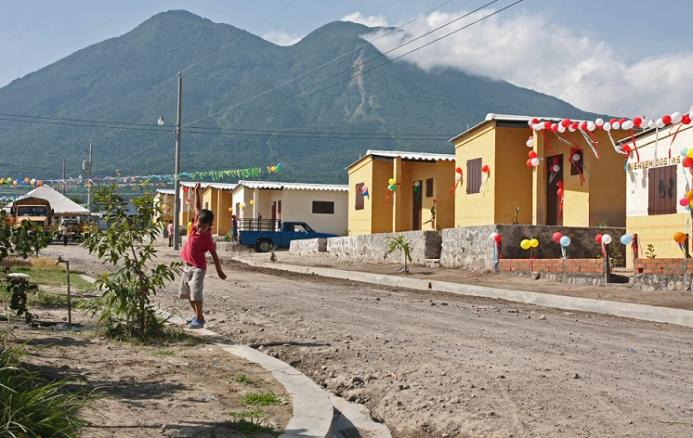
Lying along the Pacific Ocean and bordered by Guatemala and Honduras, the relatively small country of El Salvador is home to about six million people. El Salvador has an area of 20,740 km2, with important geographical and ecological variations. Approximately 86% of the national territory is ranked as subtropical humid forests, 8% as sub-tropical very humid forests and 4% as tropical humid forest land10. Annual average rainfall fluctuates between 1,525.8 mm and 2,127.2 mm, with an average of 1,823.6 mm. Annual average temperatures range between 24.2oC and 25.9oC, with an average of 24.8oC.
Geographically, the country is divided into three distinct regions: the southern coastal belt, the central valley and plateaus, and the northern mountains. Since its civil war ended in 1992, El Salvador’s economy has grown steadily, with per capita income reaching approximately US$7,300 in 2010 (CIA, 2011). The poverty rate has declined from 66 per cent in 1991 to 37.8 per cent in 2009 (USDS, 2011). While agriculture remains a significant portion of El Salvador’s economy (generating 11 per cent of Gross Domestic Product (GDP) in 2010), manufacturing (particularly textiles and apparel) and the services sector now generate 23 per cent and 58 per cent of GDP respectively (CIA, 2011). Remittances are also an important source of income (USDS, 2011).
El Salvador, through its government and particularly through the MARN, which is the entity accountable for coordinating the preparation and follow up of an environmental policy, would be committed to establish the mitigation and adaptation to climatic change strategies provided that these help to achieve national priorities and that they foster sustainable domestic development.
The Ministry of Environment and Natural Resources is currently working on a National Climate Change Plan that will include: i) the National Action Program on Adaptation (NAPA); ii) the National Appropriate Mitigation Actions (NAMAs) in the context of the national development priorities; iii) science and technology for adaptation and mitigation; iv) national and local capacity building for adaptation and mitigation; and v) education, public awareness raising and participation of the relevant actors and sectors in the design and implementation of the national public policies related to climate change.
The Project on Capacity building for Stage II adaptation to climate change (Costa Rica, Cuba, El Salvador, Guatemala, Honduras, Mexico, Nicaragua, Panama) was funded through the GEF Trust Fund and is implemented by UNDP. Central America, Mexico and Cuba serve as the pilot region for elaborating and applying an Adaptation Policy Framework for preparing adaptation strategies, policies and measures. The application of this framework demonstrated how policy for adaptation can be integrated into national sustainable development for at least three human systems: water resources, agriculture and human health. This demonstration project builds upon the Stage I vulnerability and adaptation assessments of the Initial National Communications of the eight participating countries of the region and will prepare them to move onto Stage III Adaptation. The outputs of the project, Stage II adaptation strategies are being used for preparing Second National Communications and to take steps to submit adaptation initiatives to the Special Climate Change Fund and to other financing mechanisms.
Adaptation Needs and Priorities
El Salvador has a relatively homogeneous climate. Nevertheless, climate hazards exist, and include droughts (which are noted to be increasing in length), floods and hurricanes (MARN, 2000). National temperatures have been increasing by approximately 0.35°C per decade; climate models project that temperatures will increase by 2.5° to 3.7°C by 2100. Projections are much less certain with regards to rainfall; the country has experienced a statistically insignificant reduction in rainfall in the past few decades, and projections range from declines of 36.6 per cent to increases of 11.1 per cent by the end of the century, according to the Ministry for Environment and Natural Resources (MARN) (MARN, 2000). Finally, the country’s coastal zones are expected to be affected by rising sea levels.
Agriculture, water, coasts and forests have been identified as priority areas for adaptation in El Salvador. These areas have been identified through a series of key national documents. In the country’s first (and so far only) National Communication to the United Nations Framework Convention on Climate Change (UNFCCC), released in 2000, the vulnerability of the country’s coasts and agricultural sector were assessed (MARN, 2000). Guidelines for a national adaptation strategy were developed following the release of the First National Communication, and focused on coasts, agriculture (particularly staple foods and coffee) and forests. More recently, El Salvador’s “Five-Year Development Plan” highlights agriculture, water management and ecosystems in the context of climate change adaptation (El Salvador, 2010). The Plan calls for the development of a national climate change policy, which is now forthcoming.
Beyond government documentation, a 2007 report from the United Nations Development Programme (UNDP) and the Global Environment Facility (GEF) studied the vulnerability and adaptation needs of the rural population in the central coastal plains. More specific research on drought has included an analysis of national drought policies (Romano, 2003) and a “Policy and Action Plan on Living with Droughts in El Salvador” (FUNDE, 2003); both highlight the importance of droughts for El Salvador, particularly its agriculture sector. Priority areas for adaptation action are currently being reviewed as the government develops its national climate change policy and finalizes its Second National Communication.
No list of prioritized adaptation action exists in El Salvador. Nevertheless, some key actions have been identified, particularly for the agricultural sector, including: the generation and cultivation of new crop varieties; improved water supply and irrigation; soil plant coverage; early warning systems; harvest forecasts; food surveillance systems; farming investment; insurance schemes; research and development; economic policy measures to stimulate grain production; more sustainable agricultural practices; farm zoning programs; and institutions that promote human development and food security (MARN, 2000). No measures are suggested for coastal areas. UNDP and GEF (2007) also identify a set of adaptation measures related to rural livelihoods, with a focus on agriculture.
National Level Policies and Strategic Documents
El Salvador is a signatory to the UNFCCC, with the Ministry for Environment and Natural Resources serving as the focal point for the process. The Ministry produced its First National Communication in 2000, and planned to publish its second in 2010, though it has yet to be released.
Climate change and adaptation are referred to in the “Environment and Risk Reduction Policy” section of El Salvador’s recent Five-Year Development Plan (El Salvador, 2010). The plan highlights the links between adaptation and ecosystems, water management and agriculture, and calls for the development of a national climate change policy to mainstream climate change into sectoral policies on health, agriculture, energy, transport, infrastructure, water management and waste.
El Salvador is a member of the Central American Integration System (SICA), the institutional framework for the integration of Central American states, and of the Central American Commission for Environment and Development (CCAD), a committee which brings together the environmental ministries of the SICA member states. Under the auspices of SICA and CCAD, a regional climate change strategy has recently been developed (CCAD and SICA, 2010). The strategy summarizes climate information and sectoral vulnerabilities, and proposes six strategic areas for action, including “Vulnerability and adaptation to climate variability and change, and risk management.” Under this theme, nine strategic objectives (with over 150 measures) are listed: disaster risk reduction, agriculture and food security, forest ecosystems and biodiversity, water, health, coastal-marine systems, tourism, indigenous people and public infrastructure. The strategy’s other focal areas are: mitigation; capacity building; education, awareness raising, communication and participation; technology transfer; and international negotiations and management.
Current Adaptation Action
El Salvador has a moderate amount of adaptation action currently underway, which mostly focuses on regional capacity building and research programs on climate change adaptation. Agriculture, water and coastal areas, identified as key areas for adaptation, are reflected in current adaptation activities. However, many adaptation needs remain unaddressed, such as in the areas of human health, gender and ecosystem conservation. One project focused on providing safe drinking water in the region of Zacatecoluca involves the implementation of adaptation concrete measures. Outside of this project, the majority of adaptation activity in El Salvador involves capacity building, research and policy formation and integration.
Proposed Adaptation Action
Plans are in place to expand adaptation programming in El Salvador. Action has been proposed in the areas of sustainable natural resources management, food security and coastal zone management, to be funded by the United States Agency for International Development (USAID), as well as significant planned investments in strengthening infrastructure resilience in San Salvador. The Inter-American Development Bank (IADB) is also preparing a program to support structural reform in the area of climate change and energy, although further details on the program have not yet been released.
Assessment
Overall, El Salvador has made progress in the area of adaptation, particularly in terms of research, capacities and political awareness. Agriculture, water, coasts and, to a lesser extent, forests and ecosystems are acknowledged as the key sectors for adaptation in El Salvador, and climate change is recognized as an important issue in the country’s development. At the policy level, it is expected that the soon-to-be-released Second National Communication and national climate change policy will further specify areas and actions that should be prioritized for adaptation. At the implementation level, current adaptation activities largely take place as part of regional or global projects and focus on capacity building and research. These projects are addressing needs in the priority sectors of agriculture, water and coasts. Among identified future adaptation actions, the focus is on food security, biodiversity and policy reform.
References:
- Keller, Echeverría, Parry (2011) “Review of Current and Planned Adaptation Action: Central America and Mexico.” Adaptation Partnership / International Institute for Sustainable Development.
- Central Intelligence Agency [CIA] (2011). El Salvador. The World Factbook. Retrieved from https://www.cia.gov/library/publications/the-world-factbook/geos/es.html. Last updated 25 April 2011.
- Comisión Centroamericana de Ambiente y Desarrollo [CCAD] and Sistema de la Integración Centroamericana [SICA] (2010). Estrategia Regional de Cambio Climático. Documento Ejecutivo.
- El Salvador (2010). Plan Quinqueñal de Desarrollo 2010–2014.
- Fundación Nacional para el Desarrollo [FUNDE] (2003). Política y Plan de Acción de Convivencia con la Sequía en El Salvador.
- Gavidia Medina (2001). Líneas Prioritarias de Acción para la Definición y Ejecución de una Estrategia de Adaptación al Cambio Climático en El Salvador.
- Ministerio de Medio Ambiente y los Recursos Naturales [MARN] (2000). First National Communication of the Republic of El Salvador. Retrieved from http://unfccc.int/essential_background/library/items/3599.php?such=j&symbol=SLV/COM/1%20B#beg
- Romano, L. (2003). Evaluación de las Políticas para Enfrentar la Sequía en El Salvador dentro del Marco del Desarrollo y la Transferencia de Tecnologías de Adaptación ante la Variabilidad y el Cambio Global del Clima.
- United Nations Development Programme [UNDP] and Global Environment Facility [GEF] (2007). Vulnerabilidad y adaptación al cambio climático de los pobladores rurales de la planicie costera central de El Salvador.
- United States Department for State [USDS] (2011). Background Note: El Salvador. Last updated 30 March 2011. Retrieved fromhttp://www.state.gov/r/pa/ei/bgn/2033.htm.
- Sustainable development and the integration of climate change concerns into medium- and long-term planning
- Inventories of anthropogenic emissions by sources and removals by sinks of greenhouse gases
- Measures contributing to addressing climate change
- Research and systematic observation
- Climate change impacts, adaptation measures and response strategies
- Education, training and public awareness
Potential Adaptation Measures
Agriculture and Food Security
- Educational & outreach activities to change management practices to those suited to climate change
- Switch to different cultivars
- Improve and conserve soils
- Develop new crops
- Develop and introduce policy measures, including taxes, subsidies, facilitation of free market
- Develop early warning systems and disaster preparedness
Water Resources
- Increase water supply, e.g. by using groundwater, building reservoirs, improving or stabilizing watershed management, desalination
- Decrease water demands, e.g. by increasing efficiency, reducing water losses, water recycling, changing irrigation practices
- Improve or develop water management
In 1992, countries joined an international treaty, the United Nations Framework Convention on Climate Change, to cooperatively consider what they could do to limit average global temperature increases and the resulting climate change, and to cope with whatever impacts were, by then, inevitable.
Parties to the Convention must submit national reports on implementation of the Convention to the Conference of the Parties (COP). The required contents of national communications and the timetable for their submission are different for Annex I and non-Annex I Parties. This is in accordance with the principle of "common but differentiated responsibilities" enshrined in the Convention.
The core elements of the national communications for both Annex I and non-Annex I Parties are information on emissions and removals of greenhouse gases (GHGs) and details of the activities a Party has undertaken to implement the Convention. National communications usually contain information on national circumstances, vulnerability assessment, financial resources and transfer of technology, and education, training and public awareness.
Since 1994, governments have invested significant time and resources in the preparation, collection and validation of data on GHG emissions, and the COP has made determined efforts to improve the quality and consistency of the data, which are ensured by established guidelines for reporting. Non-Annex I Parties receive financial and technical assistance in preparing their national communications, facilitated by the UNFCCC secretariat.








